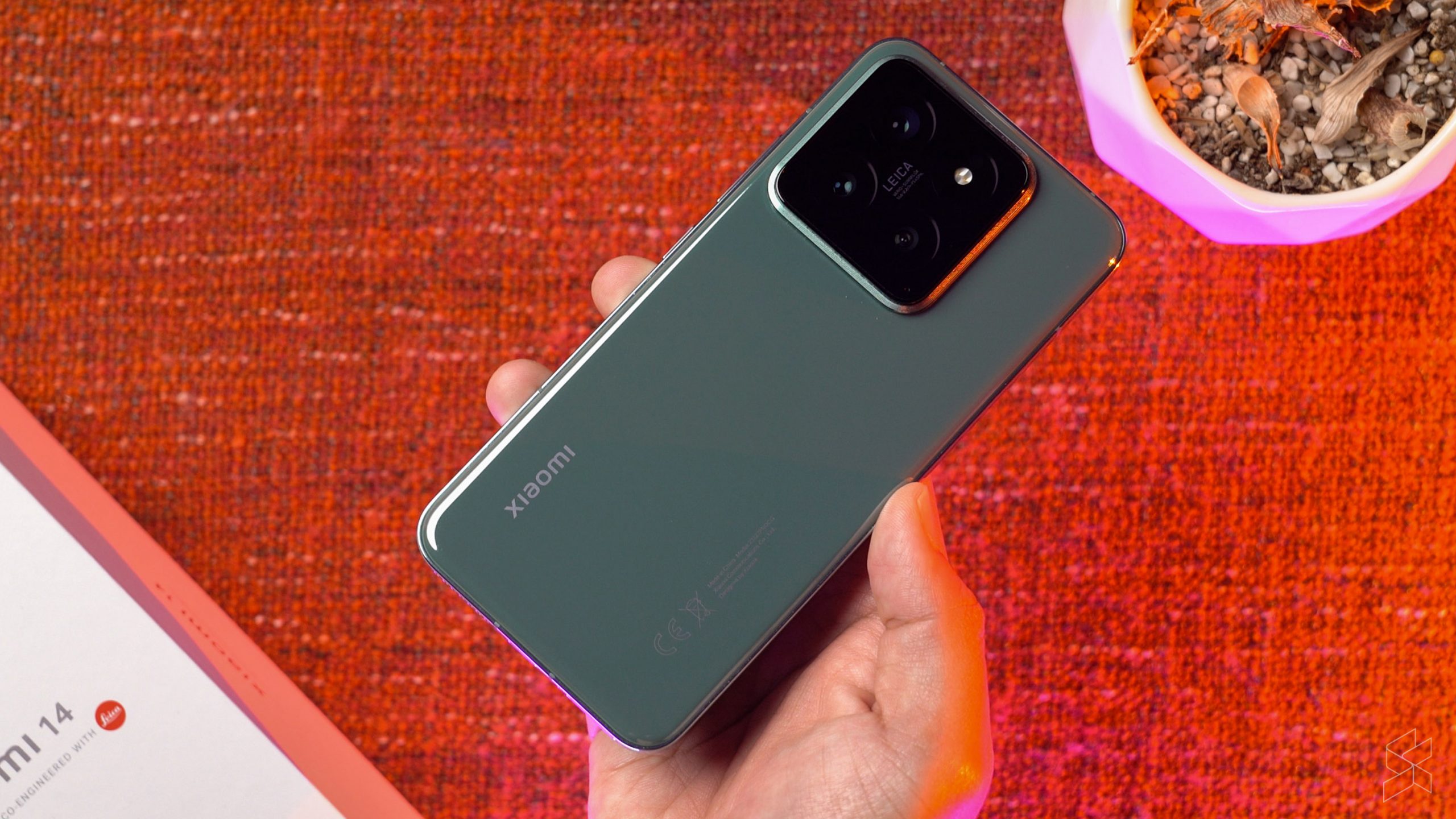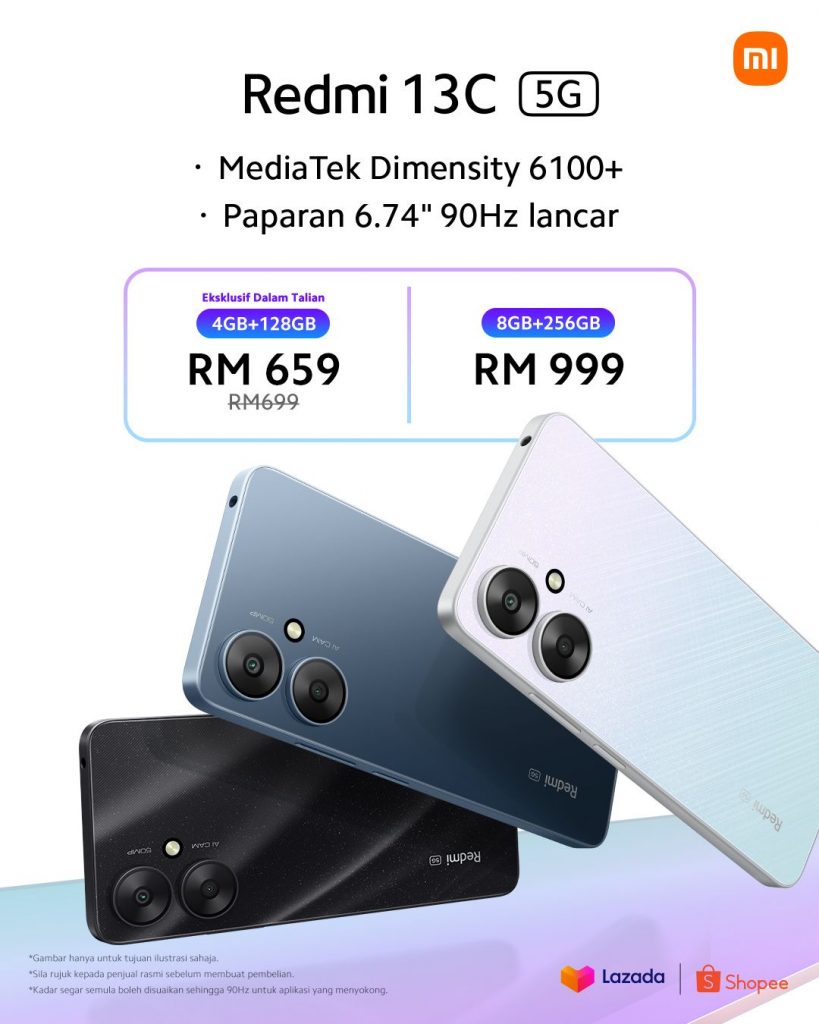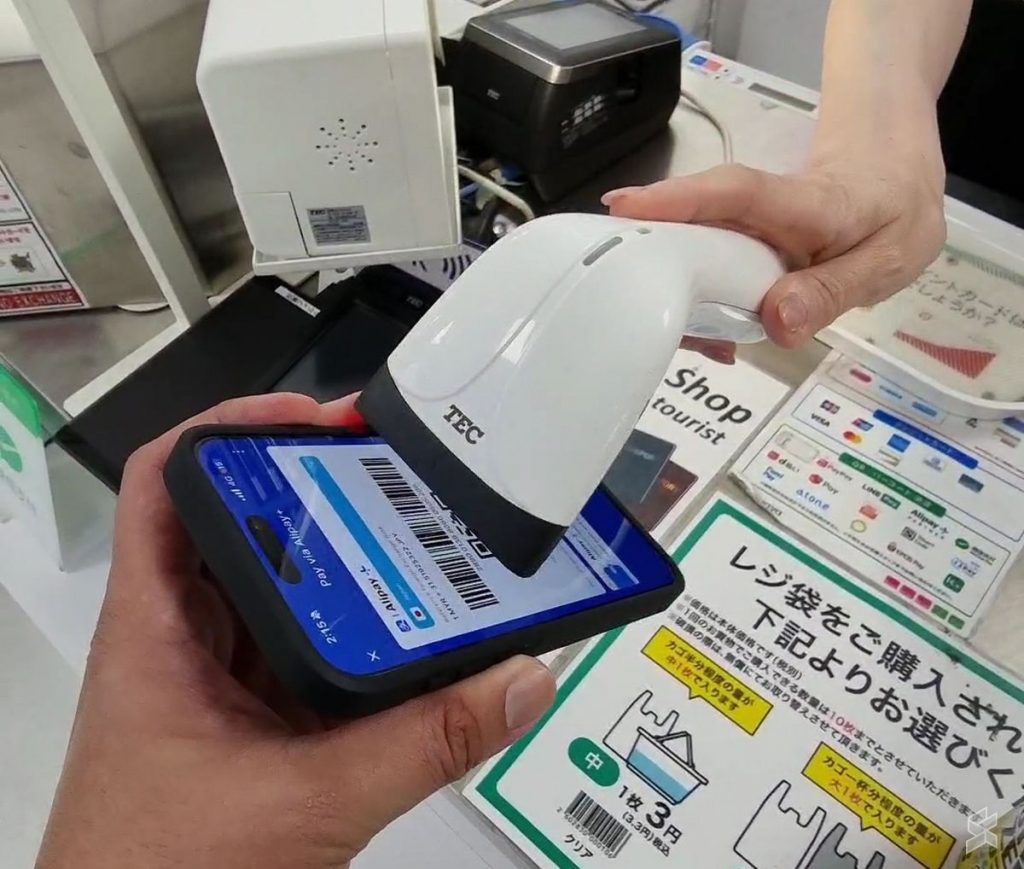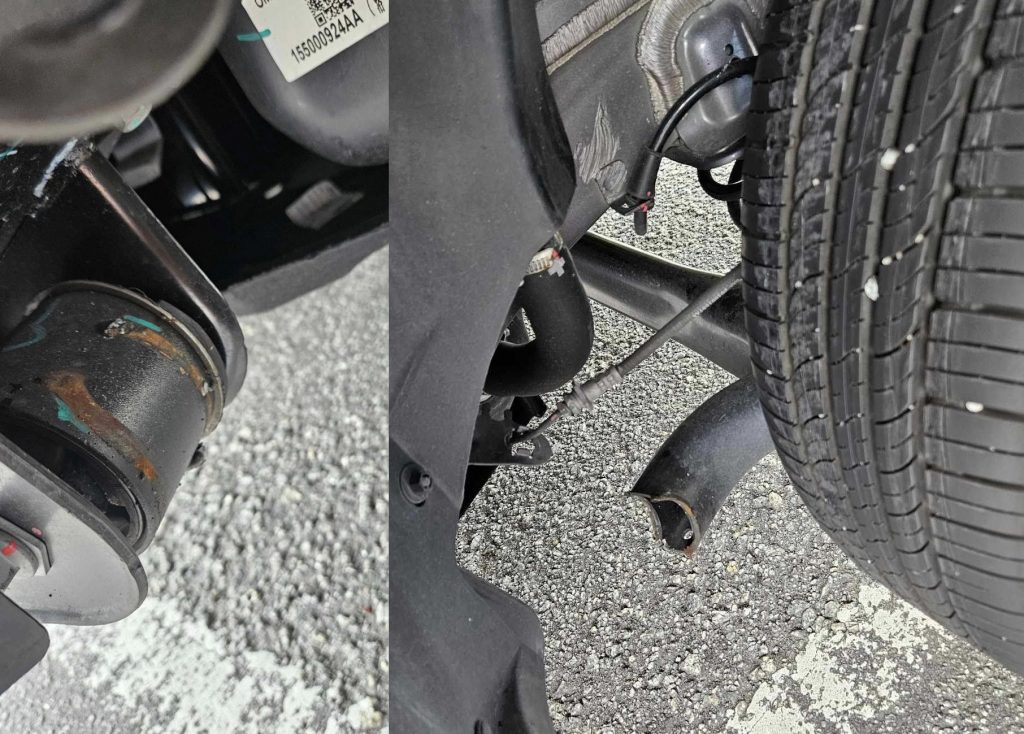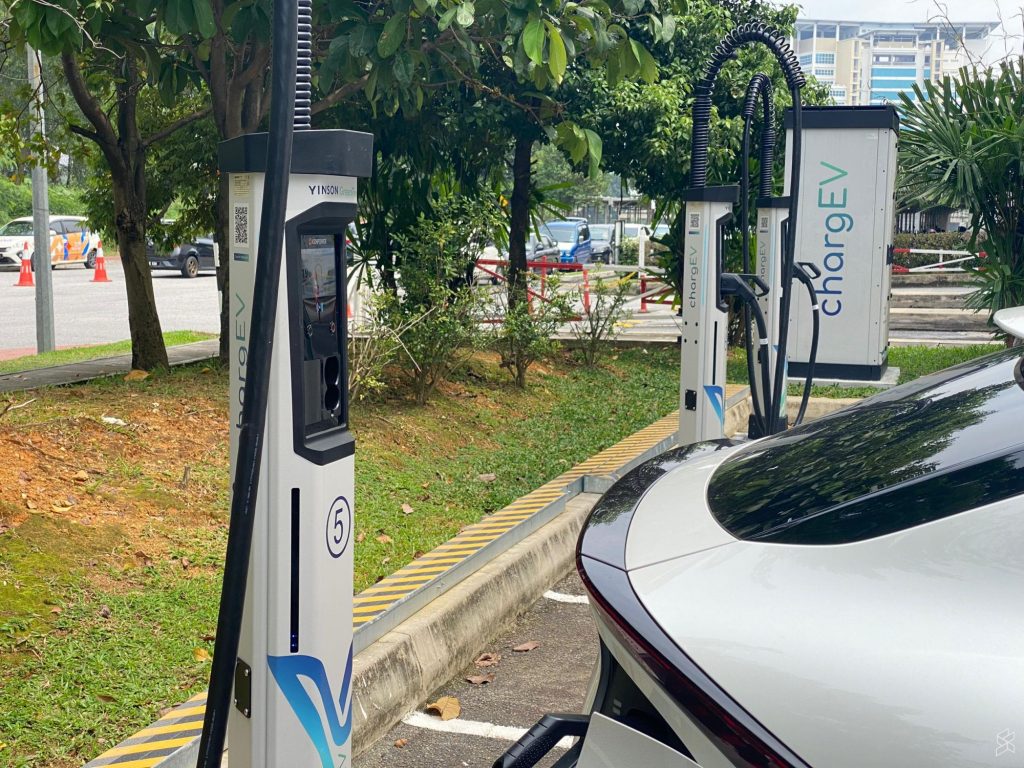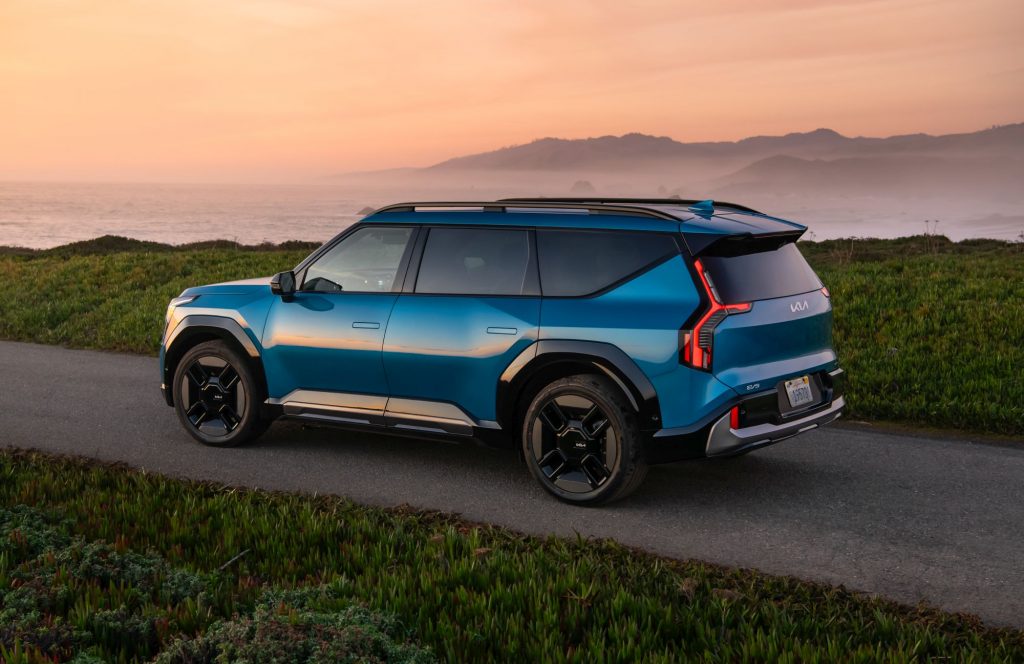Fresh off making its global debut at MWC 2024, the Xiaomi 14 is now available in Malaysia. It undoubtedly has plenty of things going for it, being the first smartphone in the world to be powered by the Qualcomm Snapdragon 8 Gen 3, the first to debut Xiaomi’s new HyperOS software and has the Leica branding over its cameras.
I have a secret to share though: I’ve actually already used it for a couple of weeks now, before it officially launched here. And not only have I been using it, I’ve been super impressed by the Xiaomi 14 too.
Unashamedly top-heavy
Just about everyone now is going for the flat sides look with their smartphones, and the Xiaomi 14 is no different with its glossy aluminium frame and glass back. The one we had for review came in this gorgeous Jade Green colourway, which added to the whole premium appeal that Xiaomi is certainly going for here.
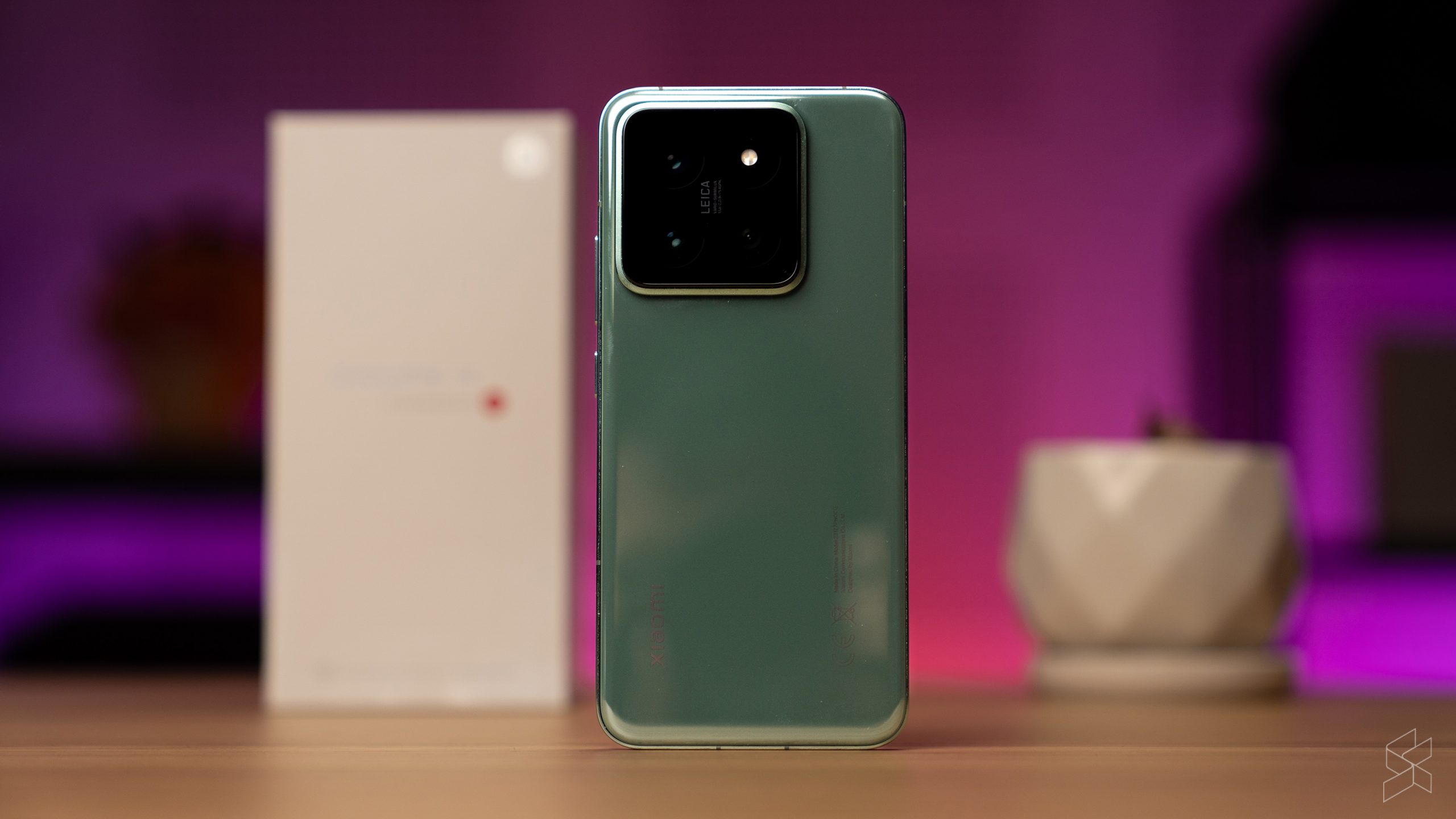
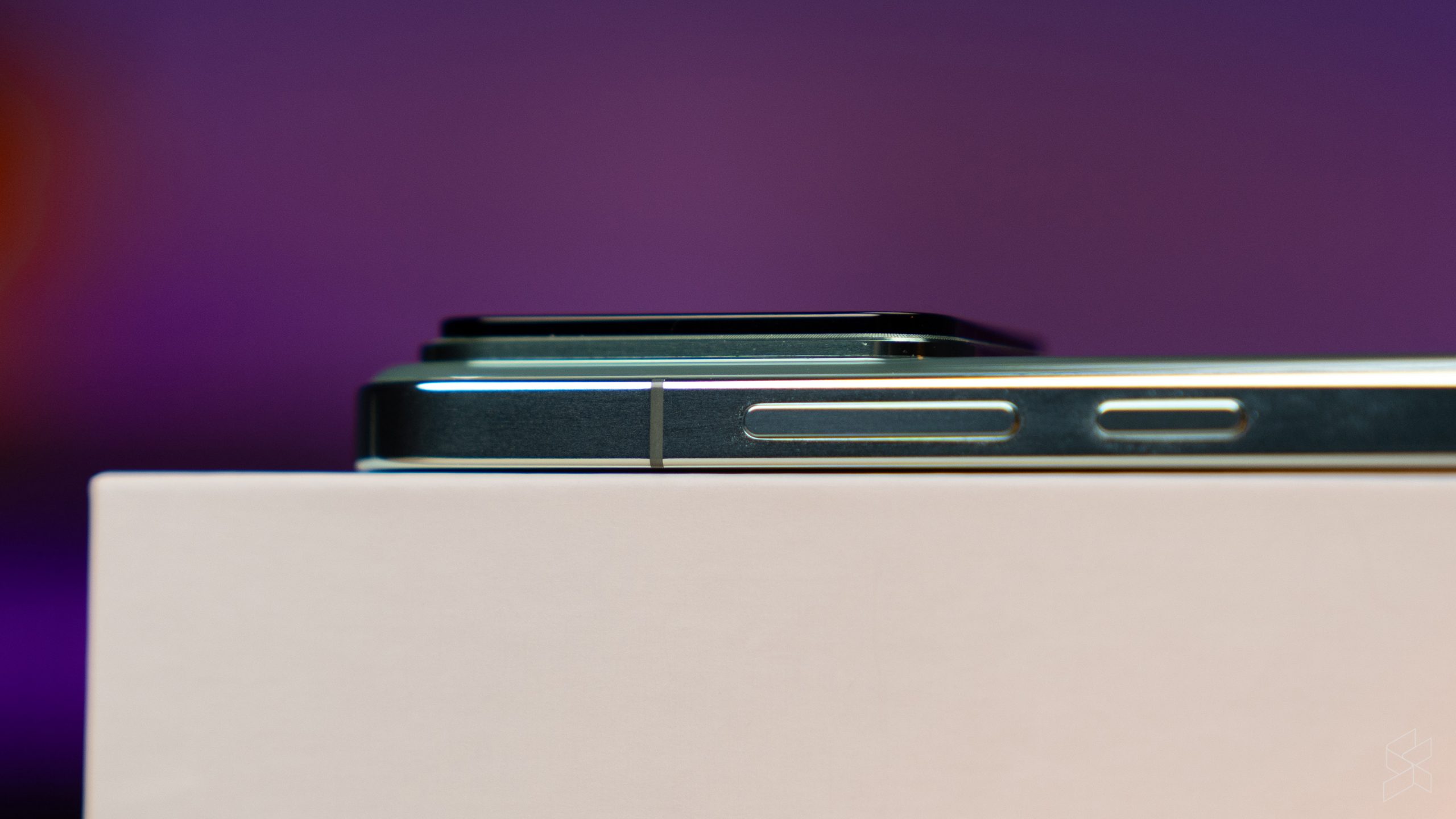
As I was using the Xiaomi 14, perhaps the most common remark I got from people around me whenever I pulled it out was that the camera bump is huge. It doesn’t help that the Xiaomi 14 isn’t exactly a large smartphone in the first place. In fact, the camera bump here is noticeably larger than the one of my iPhone 13 Pro Max, and also larger than the iPhone 15 Pro Max. You kinda end up with a top-heavy vibe here, though I certainly don’t mind it; I prefer squared off camera bumps anyway instead of large circular ones.
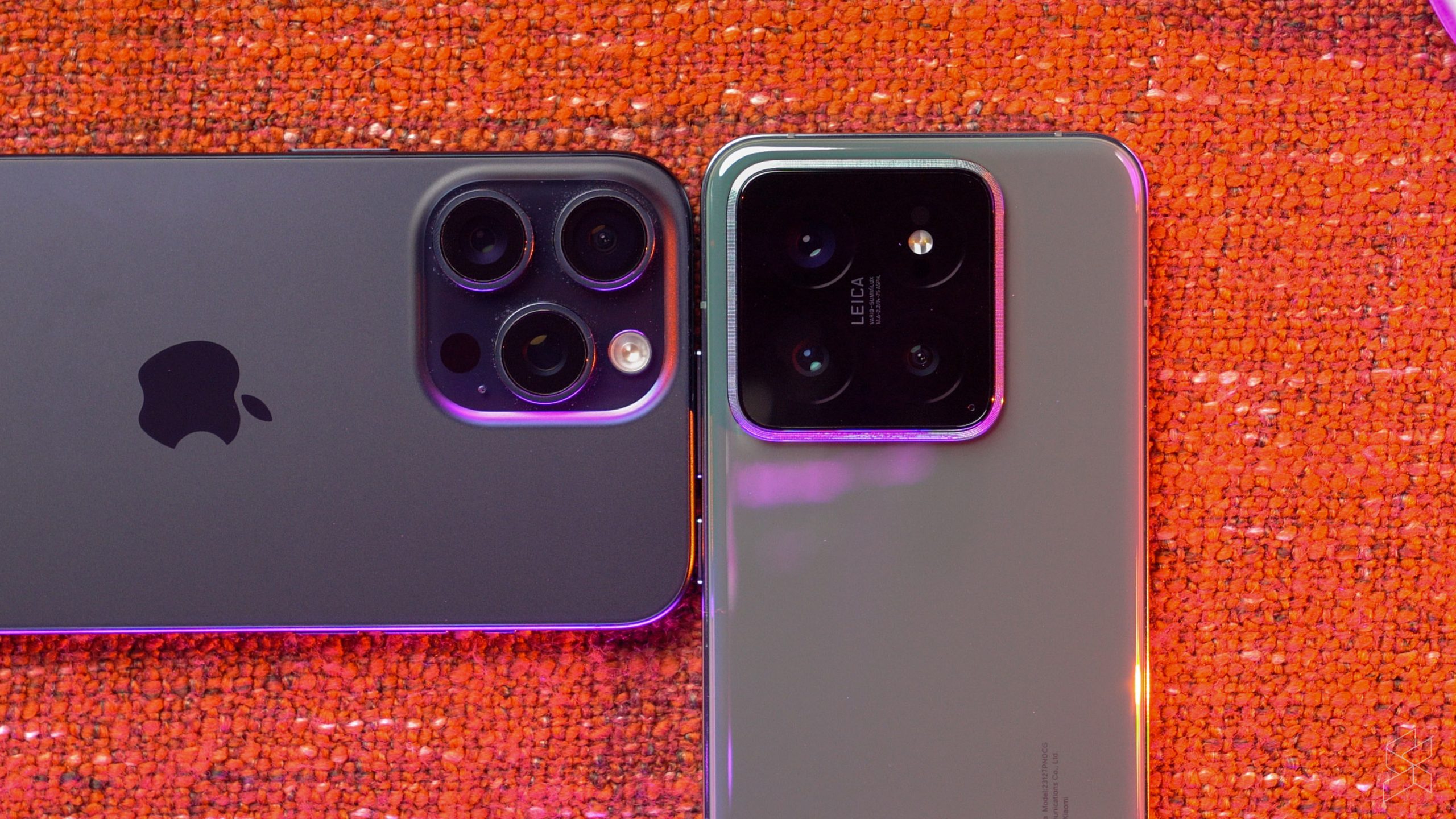
Xiaomi did try to position the Xiaomi 14 as a ‘compact’ flagship, but if I’m being honest I think it’s just a smidge too big to really qualify as a compact smartphone. That doesn’t mean that’s too unwieldy though—far from it in fact. The Xiaomi 14 is actually quite comfortable to hold and use as a daily driver. Even with its glass back, it’s not slippery by any means and at 188g isn’t too heavy either. I will add that if you’re going to use it without a case—you know, to show off that lovely Jade Green—you will find yourself wiping away the fingerprints on the back every couple of hours. It having an IP68 dust and water resistance rating is yet another a nice-to-have.
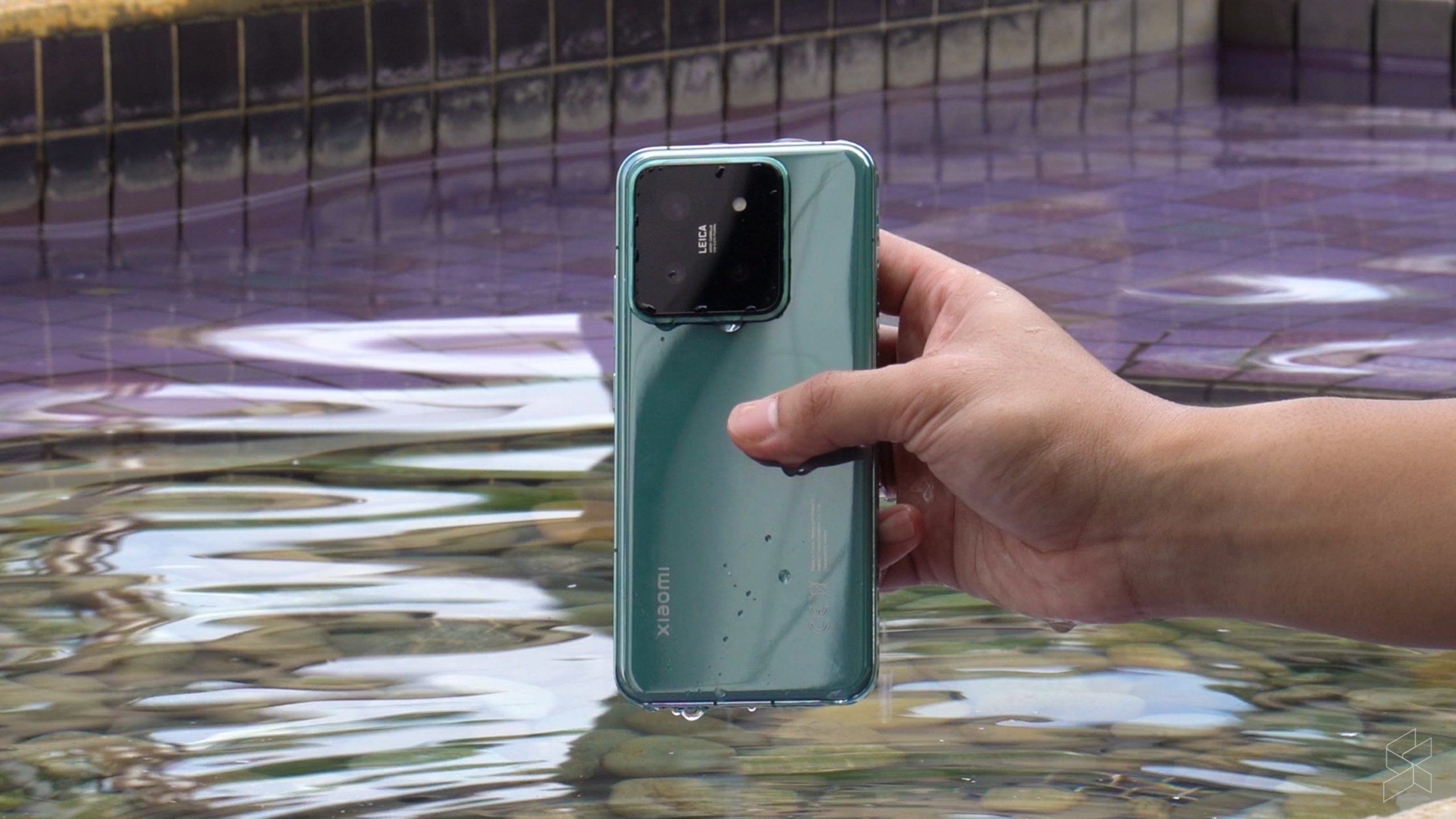
Do I think that the Xiaomi 14 is the best looking smartphone of the year so far? Well, probably not, as I actually liked the matte finish on the ROG Phone 8 Pro more, but the Xiaomi 14 is definitely in my top 3 so far.
Decent display, average audio
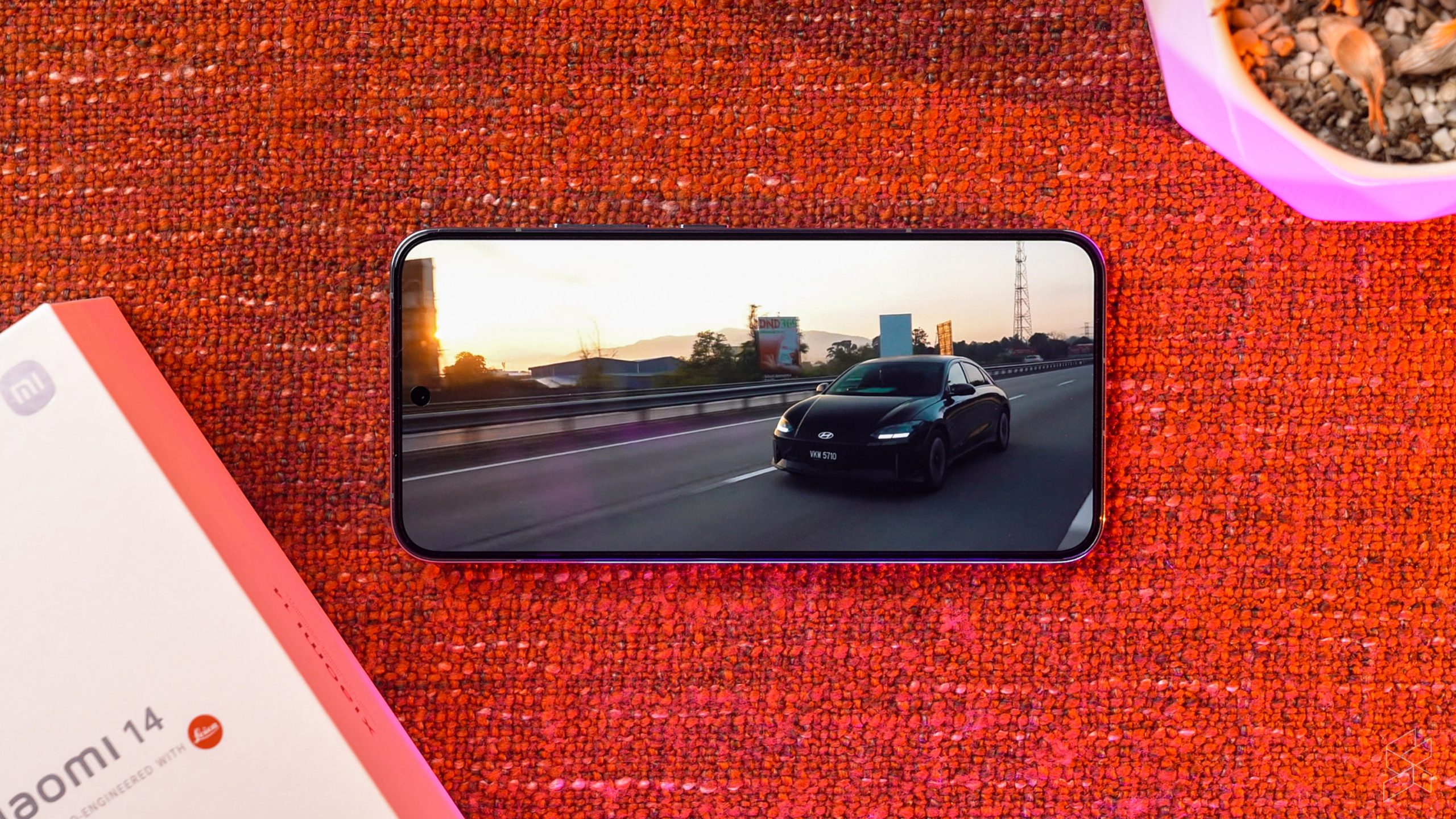
As for its display, I have zero complaints about it. The 6.36-inch OLED display pushes a 2670 x 1200p resolution for a sufficiently good 460ppi pixel density, with a 120Hz dynamic refresh rate, a peak brightness of 3,000nits, full coverage of the DCI-P3 colour gamut and has a layer of Corning Gorilla Glass Victus over it for scratch resistance. It is very much up to snuff with what you’d expect from a flagship smartphone—perfectly adequate for watching content, scrolling social media and easily gets bright enough to be used even under direct sunlight.
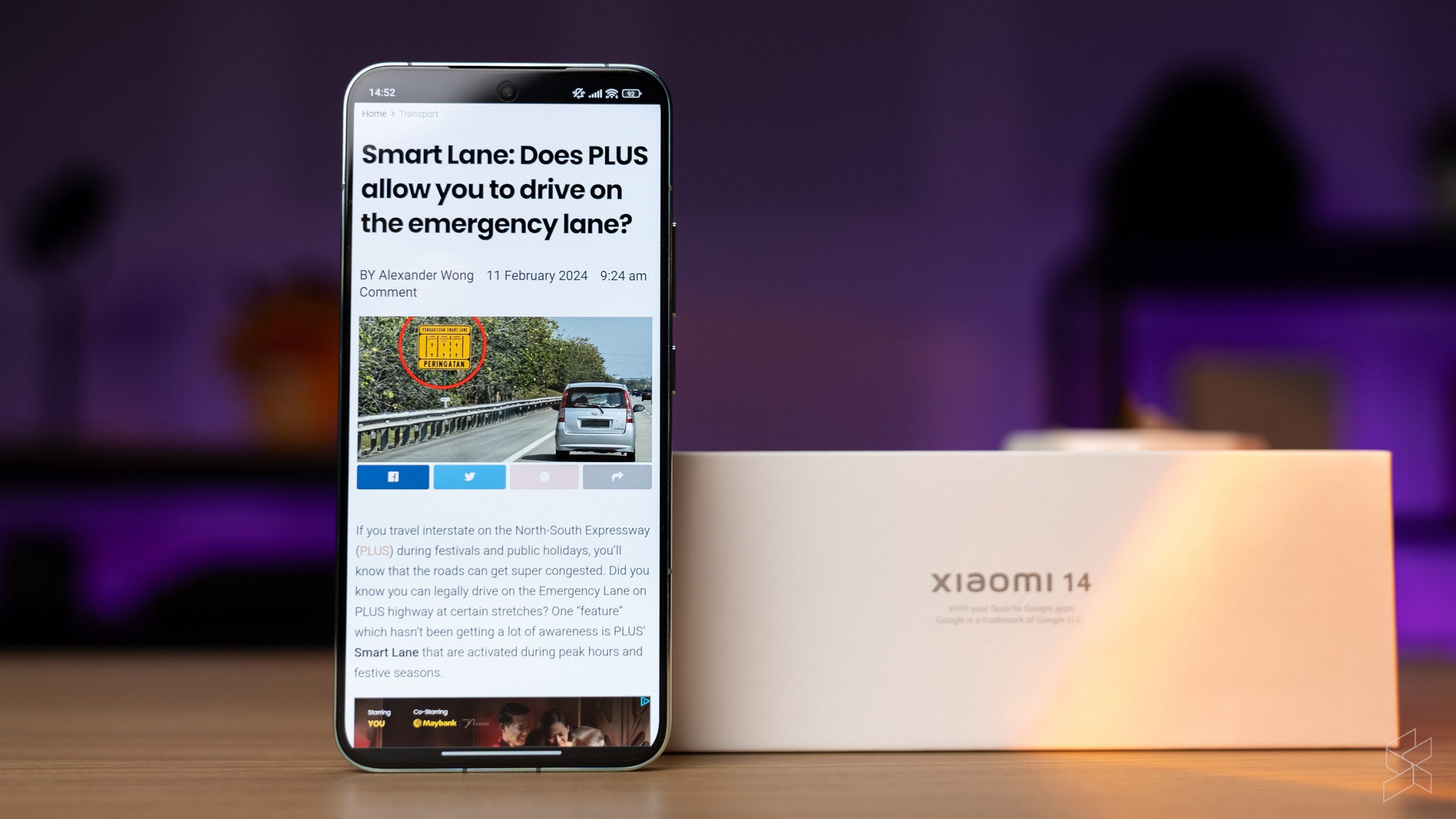
It’s in the audio department though that isn’t as impressive as it should be. The Xiaomi 14 packs stereo speakers—one up top and another bottom firing one—and they do get reasonably loud, but also rather hollow. Despite coming with Dolby Atmos certification, the Xiaomi 14 lacks a fair bit of oomph on both the low and top end and also not much in the way of spatial sound. The 4-mic array at the very least does deliver impressively good audio recordings—you can hear it for yourself when we used it to shoot our videos at MWC 2024. SoyaCincau co-founder Amin even swears by it, saying that it’s better than the mic on the iPhone 15 Pro Max for video recording.
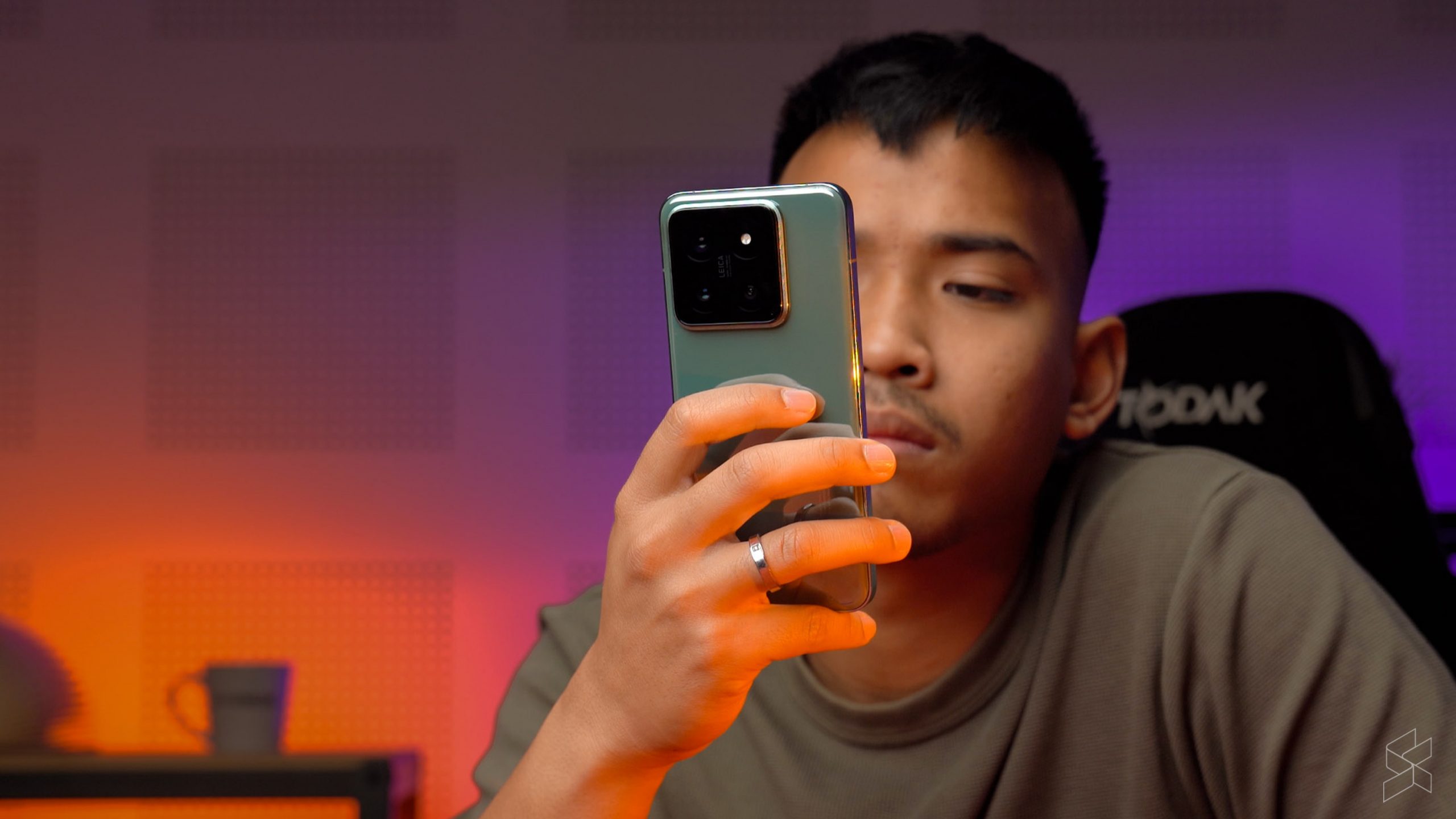
One surprisingly good thing though has been the haptics on the Xiaomi 14. Xiaomi claimed that they brought a custom version of the high-vibration X-axis linear motor from the Xiaomi 13 Ultra over to the Xiaomi 14, and I’m inclined to believe them here. Haptics certainly isn’t the first thing people care about when looking for a new smartphone, but if you’re going to get a flagship device you’d want the best experience you can get right? Even the little things like the haptics and vibration tell me a lot about the care Xiaomi have put into this smartphone.
HyperOS feels like it was mostly hype
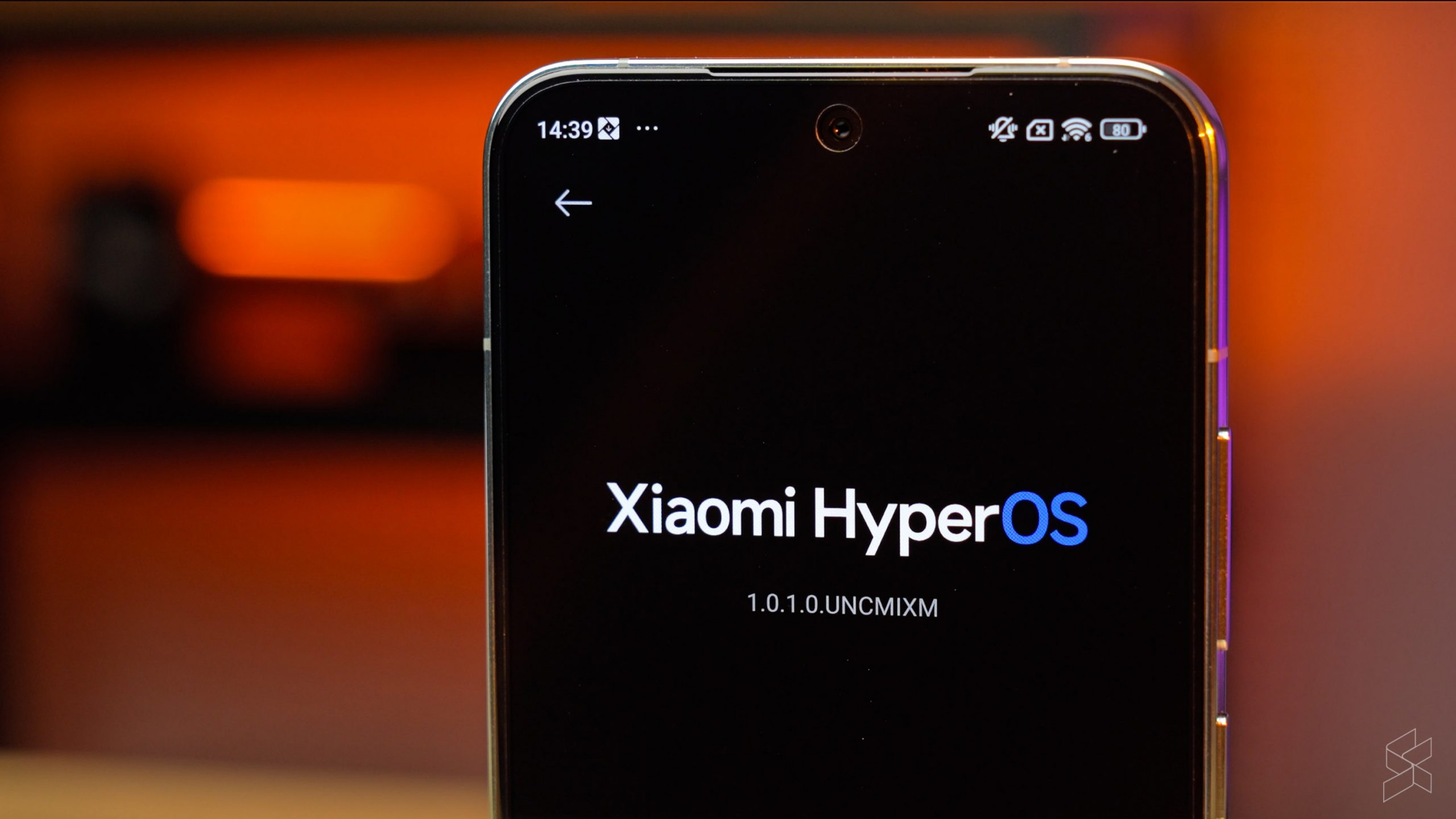
Under the hood, the Xiaomi 14 packs the Qualcomm Snapdragon 8 Gen 3 system-on-chip and made headlines for being the first smartphone in the world too do so when it debuted in China late last year. But it was actually the fact that it comes with Xiaomi HyperOS out of the box that I was more excited for, seeing as I am the resident fan and the ardent supporter of MIUI in the SoyaCincau office.
When Xiaomi CEO first introduced HyperOS to the world, it was claimed that this would be a more ‘human centric’ operating system, the result of the Chinese giant merging their smartphone and IoT Vela platform together into one ecosystem. Now I don’t doubt that they’ve probably made plenty of underlying changes to their mobile operating system, but as someone who’s fairly familiar with MIUI over the years, HyperOS feels mostly the same with little tweaks in design and layout.
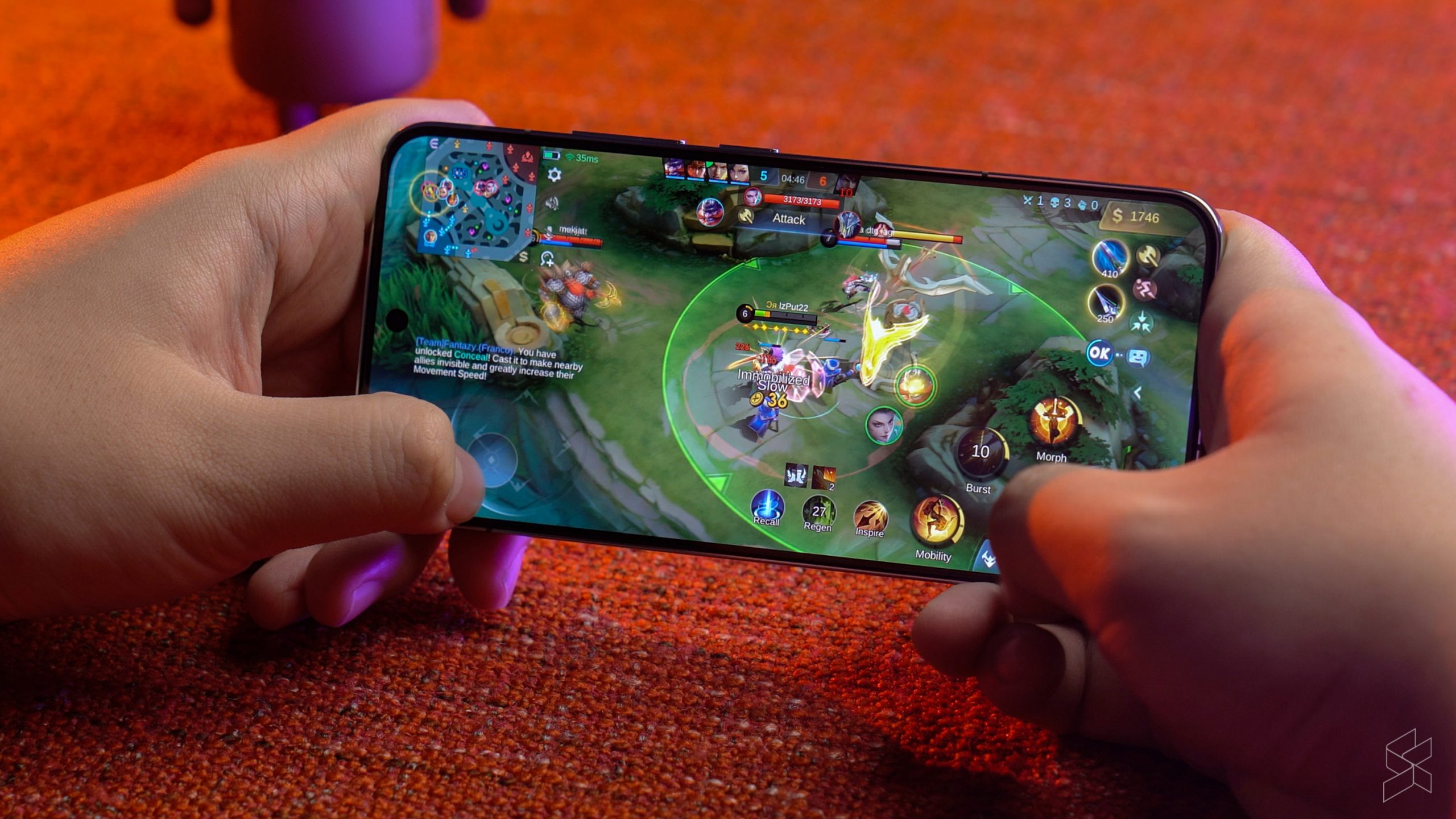
That’s not necessarily a bad thing of course. Together with that high refresh rate display and the Snapdragon 8 Gen 3 chipset, day-to-day usage of the Xiaomi 14 was generally speedy and responsive with no real moments of sluggish behaviour to report on. If anything, the HyperOS animations when swiping around were nice to the eye, and past Xiaomi users should have no issue using the Xiaomi 14. Even the same split notification shade and control centre makes a return, the first iteration of which I encountered myself when I was still using a Mi 9 as my daily driver. No real surprises in its gaming capabilities either, with the Snapdragon 8 Gen 3 more than capable in playing even the most resource intensive games such as Honkai Star Rail, though it does end up a tad warm after longer sessions.
Why do I sound a little disappointed then? Well it’s likely because I just expected a little bit more from HyperOS, instead of what feels like just another iteration of MIUI. There’s still preinstalled bloatware here, and I also encountered some bugs, like my Spotify widget being replaced by the default music player all the time in the notification shade. Then there’s also my YouTube entering full screen mode with half the video chopped away—though in fairness that could’ve been a bug with YouTube so I’m not really willing to blame HyperOS on that just yet.
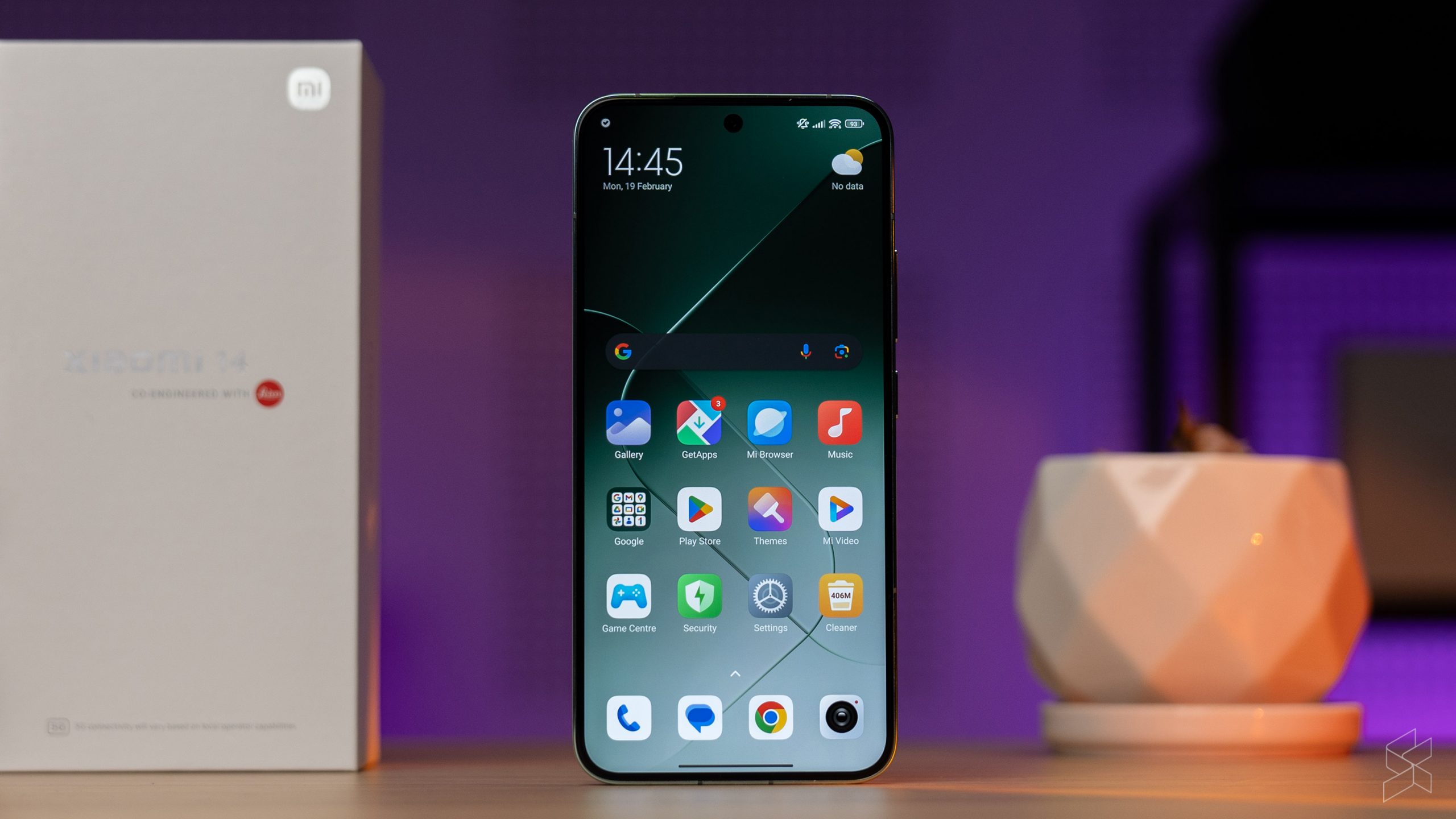
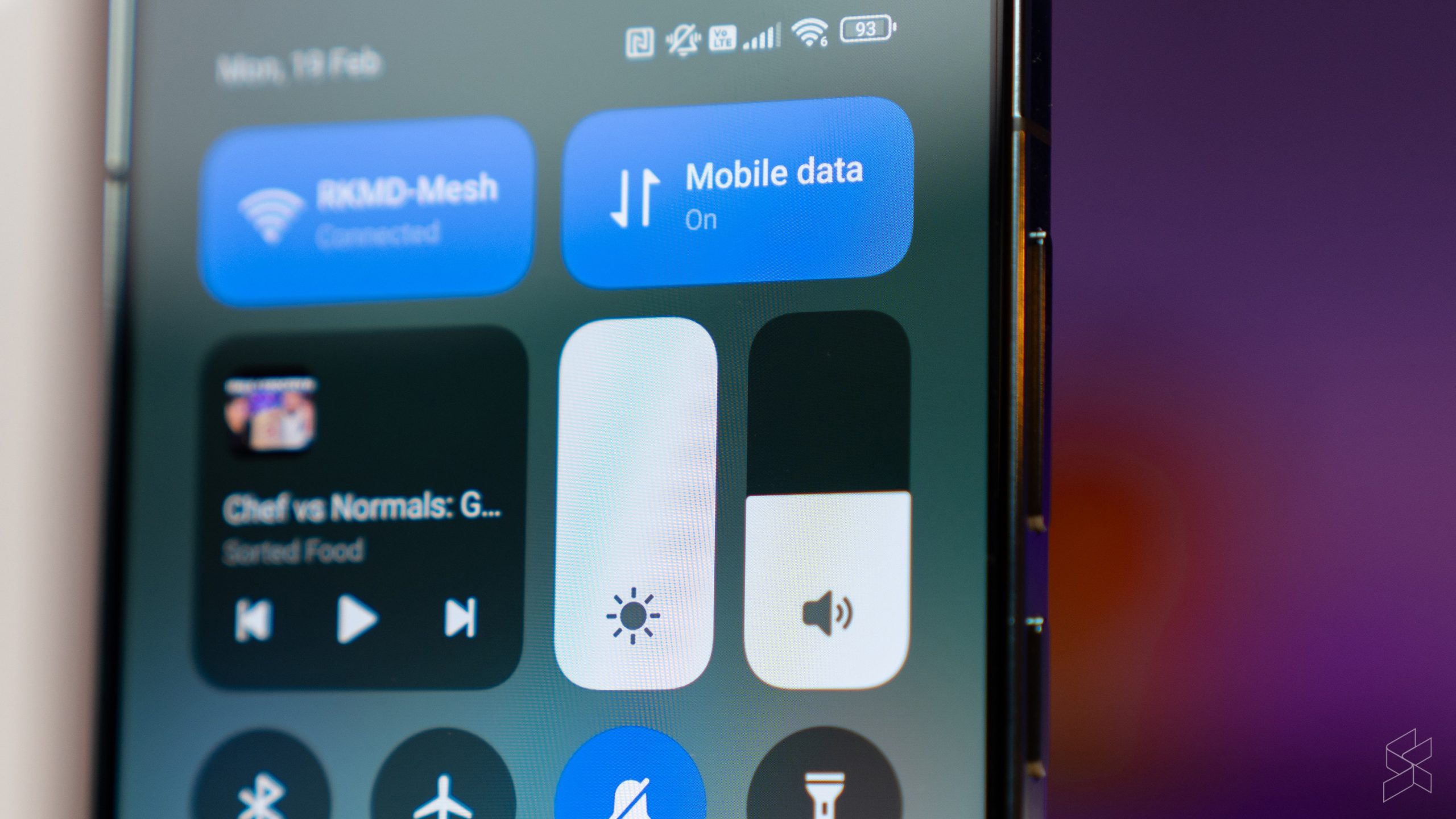
On the bright side, there’s plenty of opportunity for Xiaomi to improve upon HyperOS. Xiaomi is guaranteeing a minimum of four years of major Android OS upgrades and five years of security patches. It’s not as much as say Samsung or Google, but it’s still enough to get you through till Android 18.
In terms of battery life, the Xiaomi 14 doesn’t actually come with that big of a battery, with a battery capacity of just 4,610mAh and support for 90W HyperCharge fast charging along with 50W HyperCharge wireless charging. That being said, it does last long enough to survive a full day of use, with about 20 to 30% left by the time I hit the bed without needing to baby the battery and with brightness set to just over 50%.
Phenomenal Leica cameras
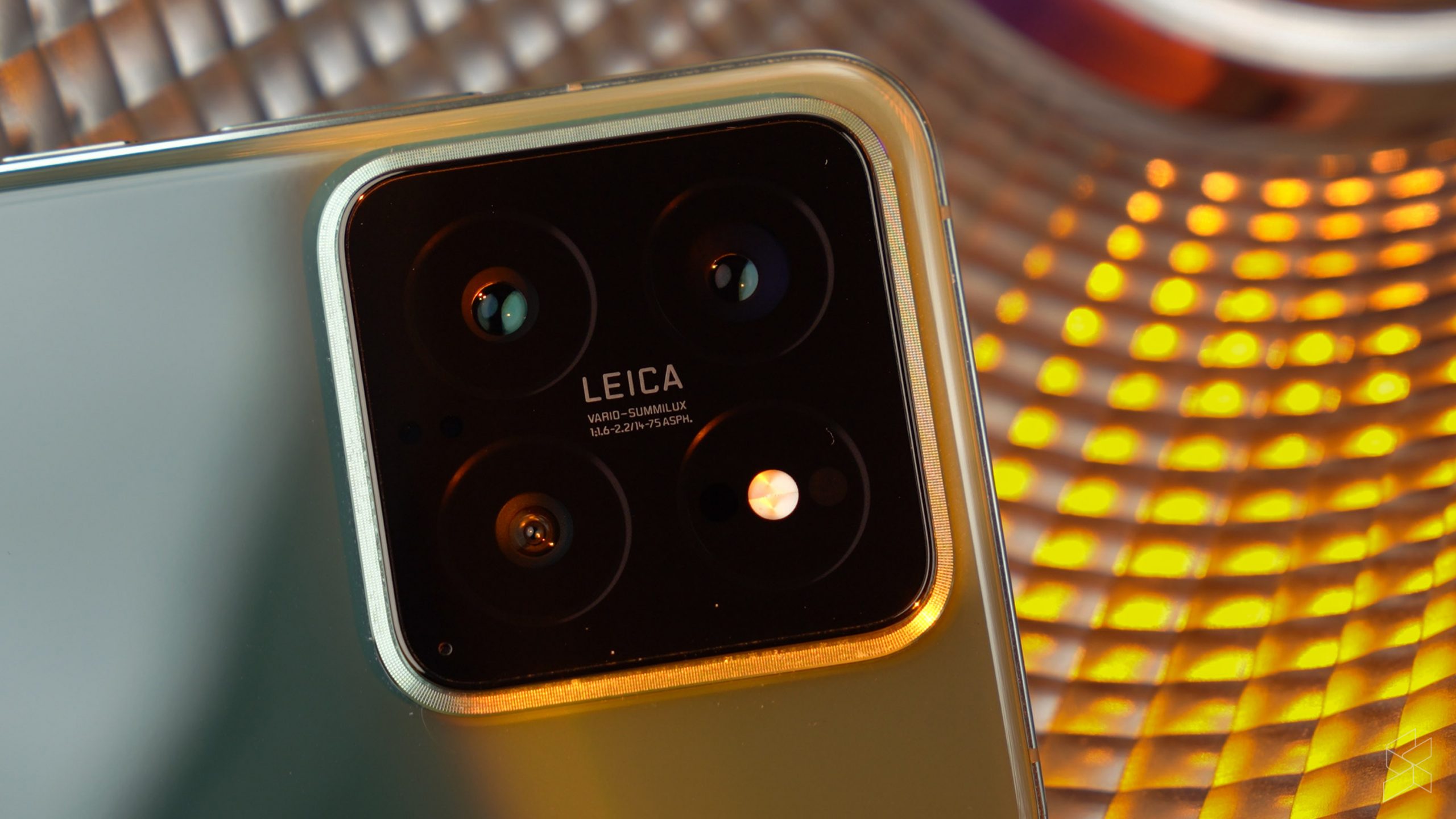
We now come to the part where I’ve been the most impressed with the Xiaomi 14: its cameras. As you’ve probably heard by now, Xiaomi worked with Leica to co-engineer the camera setup on the Xiaomi 14, resulting in Leica Vario-Summilux 1:1.6-2.2/14-75 ASPH optical lenses being used here. As for the actual cameras themselves, it’s a main 50MP, f/1.6 camera using a new Light Fusion 900 1/1.31″ image sensor, delivering 23mm equivalent shots. It’s flanked by a 50MP, f/2.0 floating telephoto shooter offering a 3.2x optical zoom equivalent to a 75mm shot, along with a third 50MP, f/2.2 ultrawide offering a 14mm wide shot; a 32MP, f/2.0 selfie shooter rounds things off.
The Xiaomi 14 is actually not the first Leica-branded Xiaomi smartphone that I’ve used; that honour belongs to the Xiaomi 13T Pro. Now when I reviewed that phone, I highlighted how despite an excellent main camera, the telephoto was a weak point there along with its portrait modes. With the Xiaomi 14 though, I was more surprised to find how well balanced the whole camera setup is.

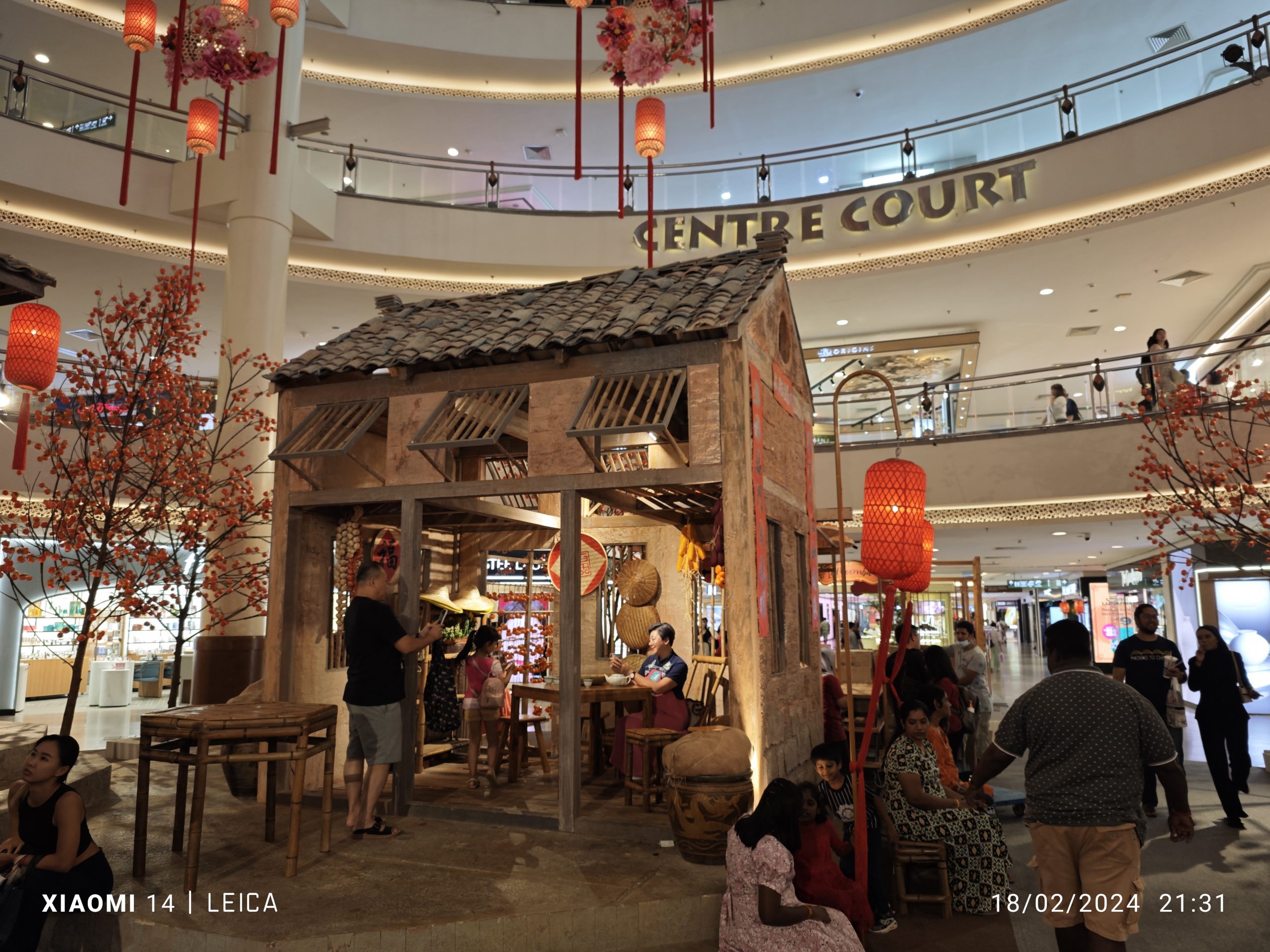
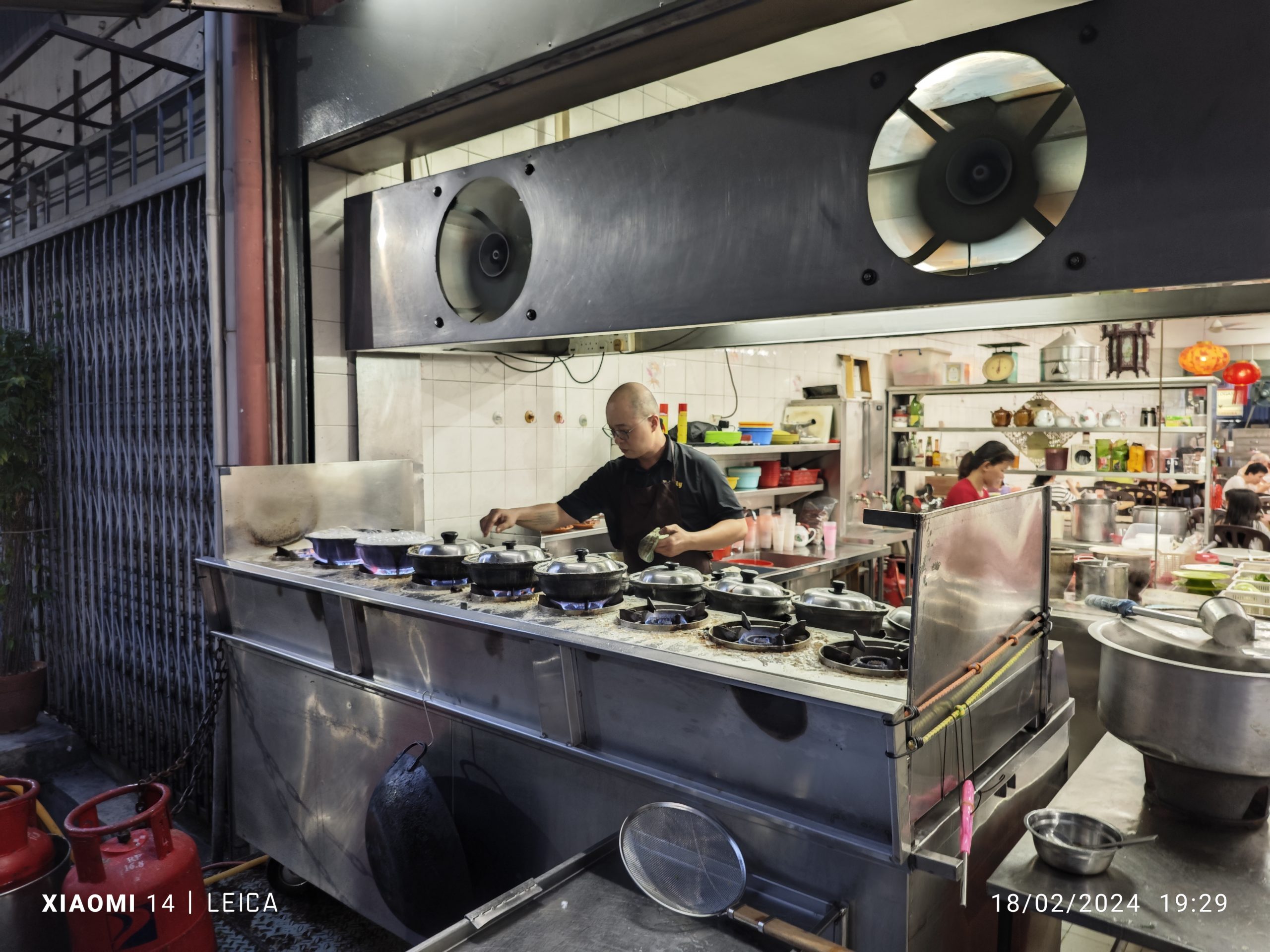
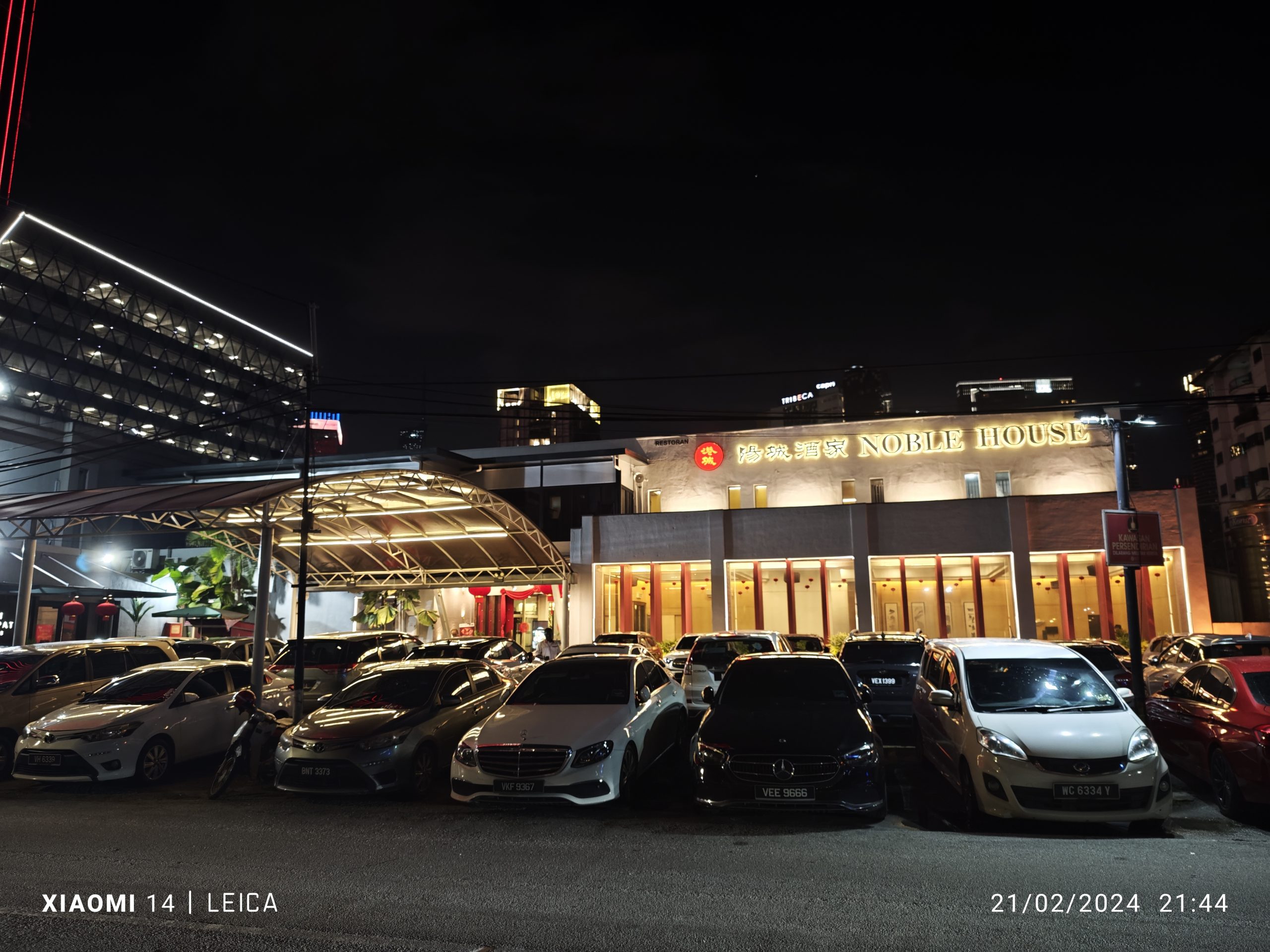


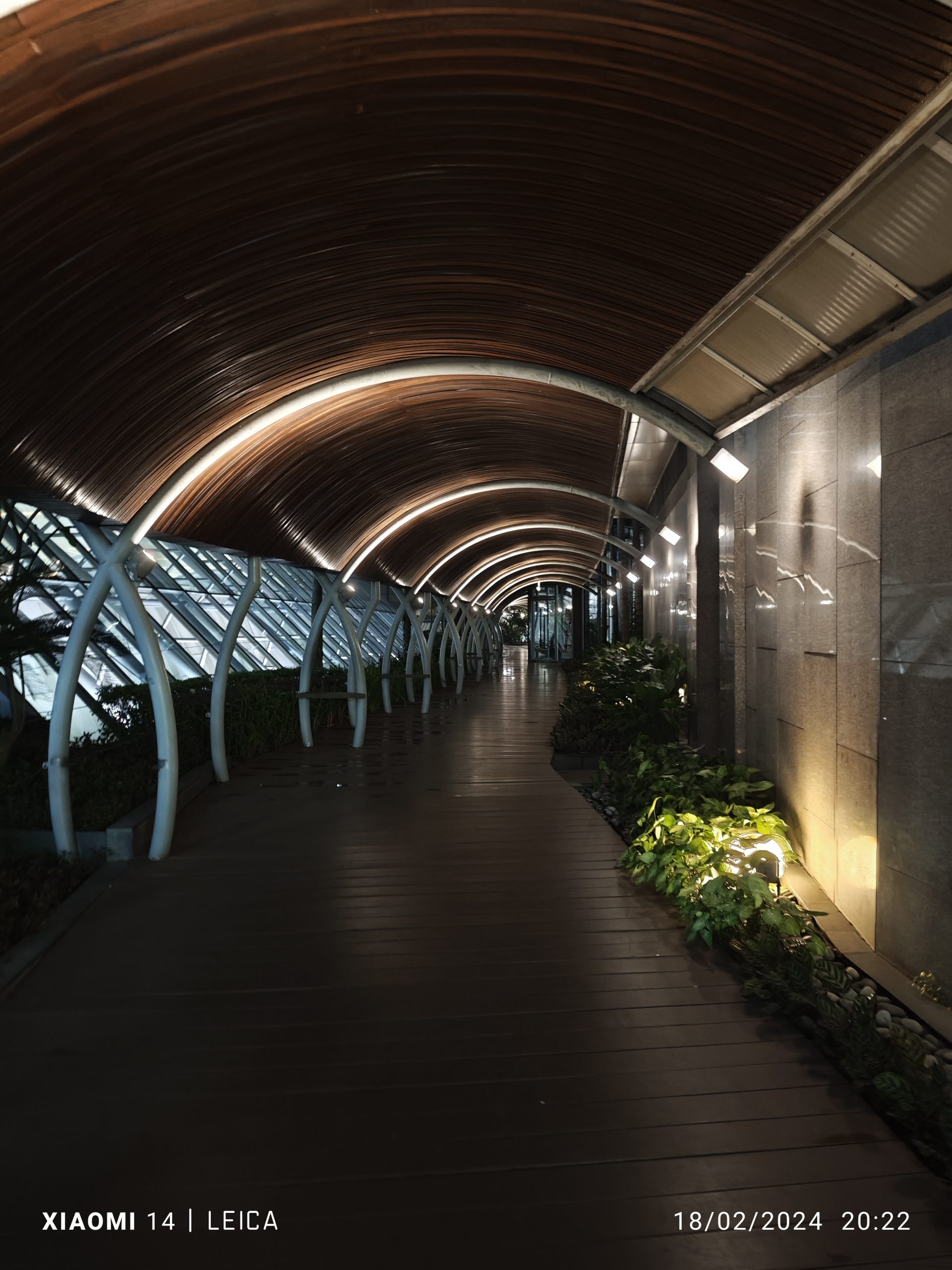



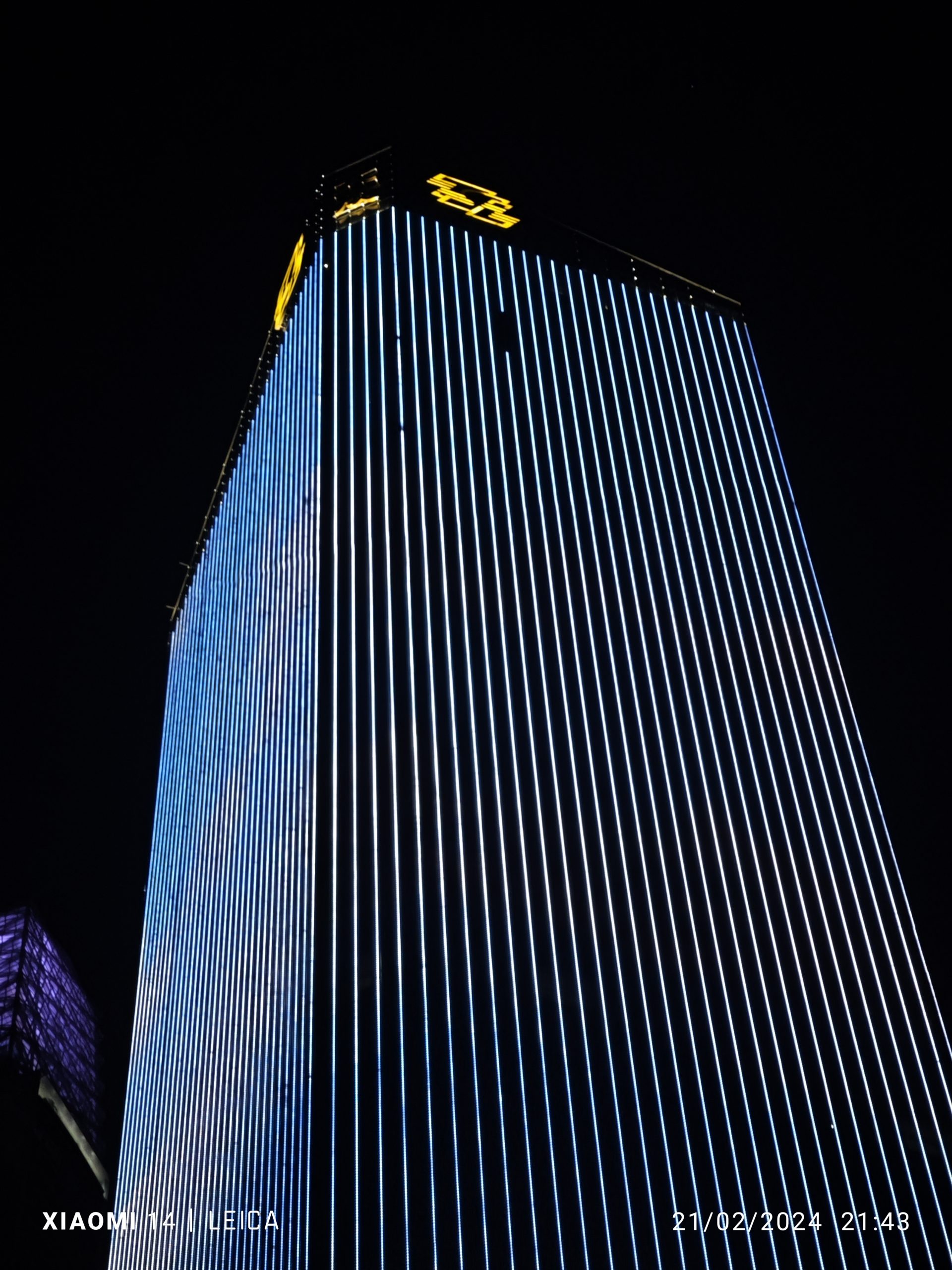


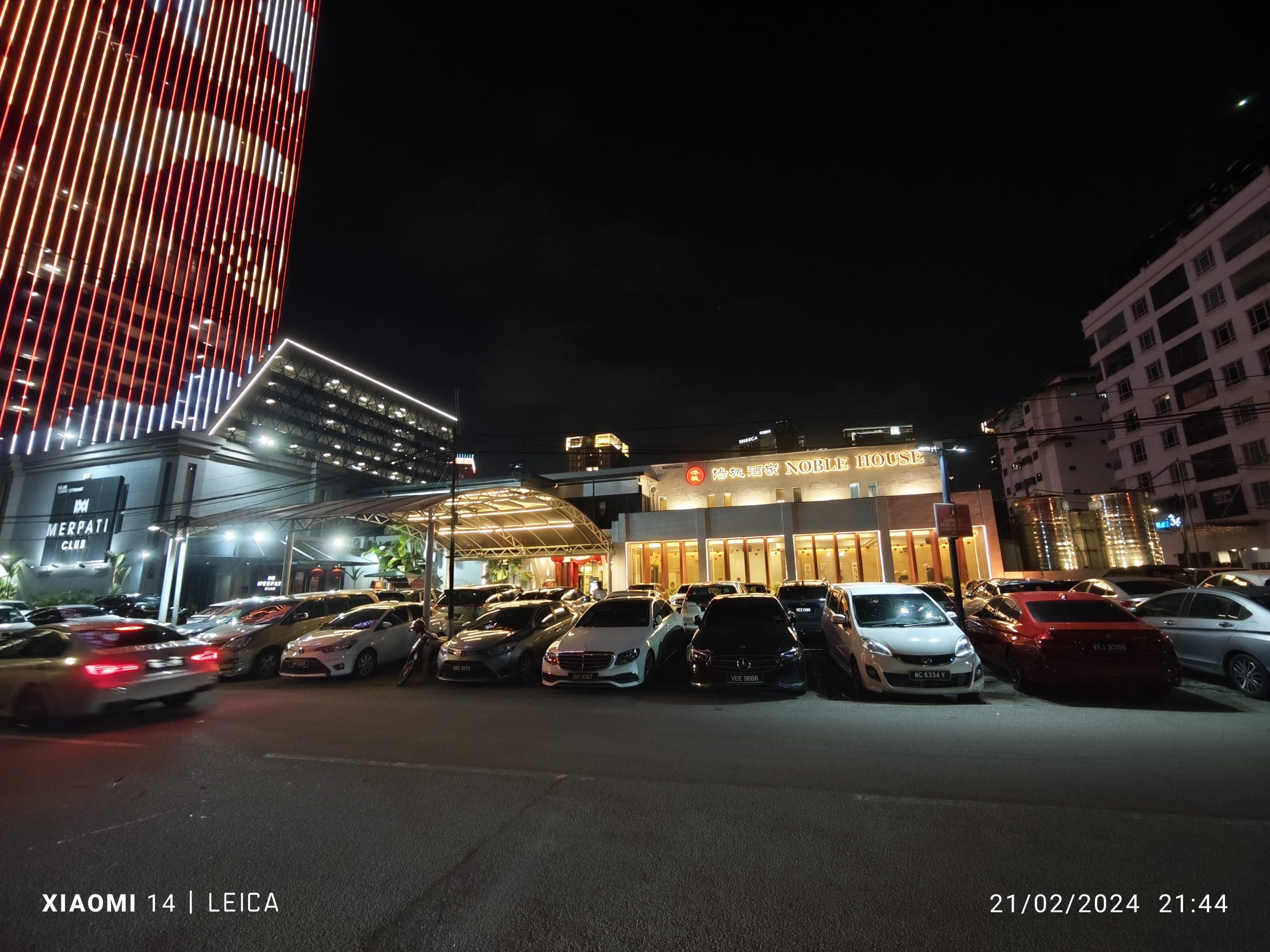
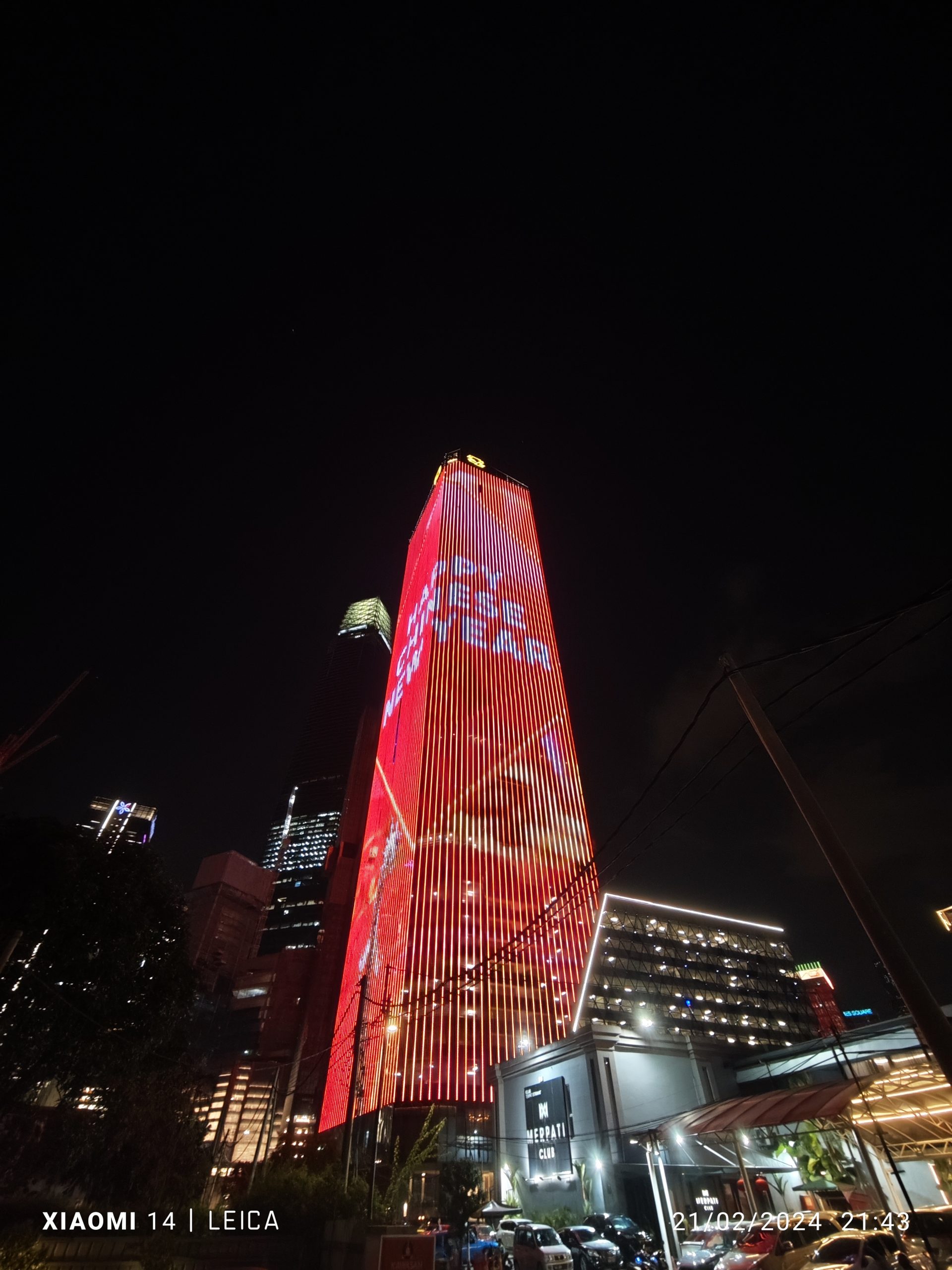
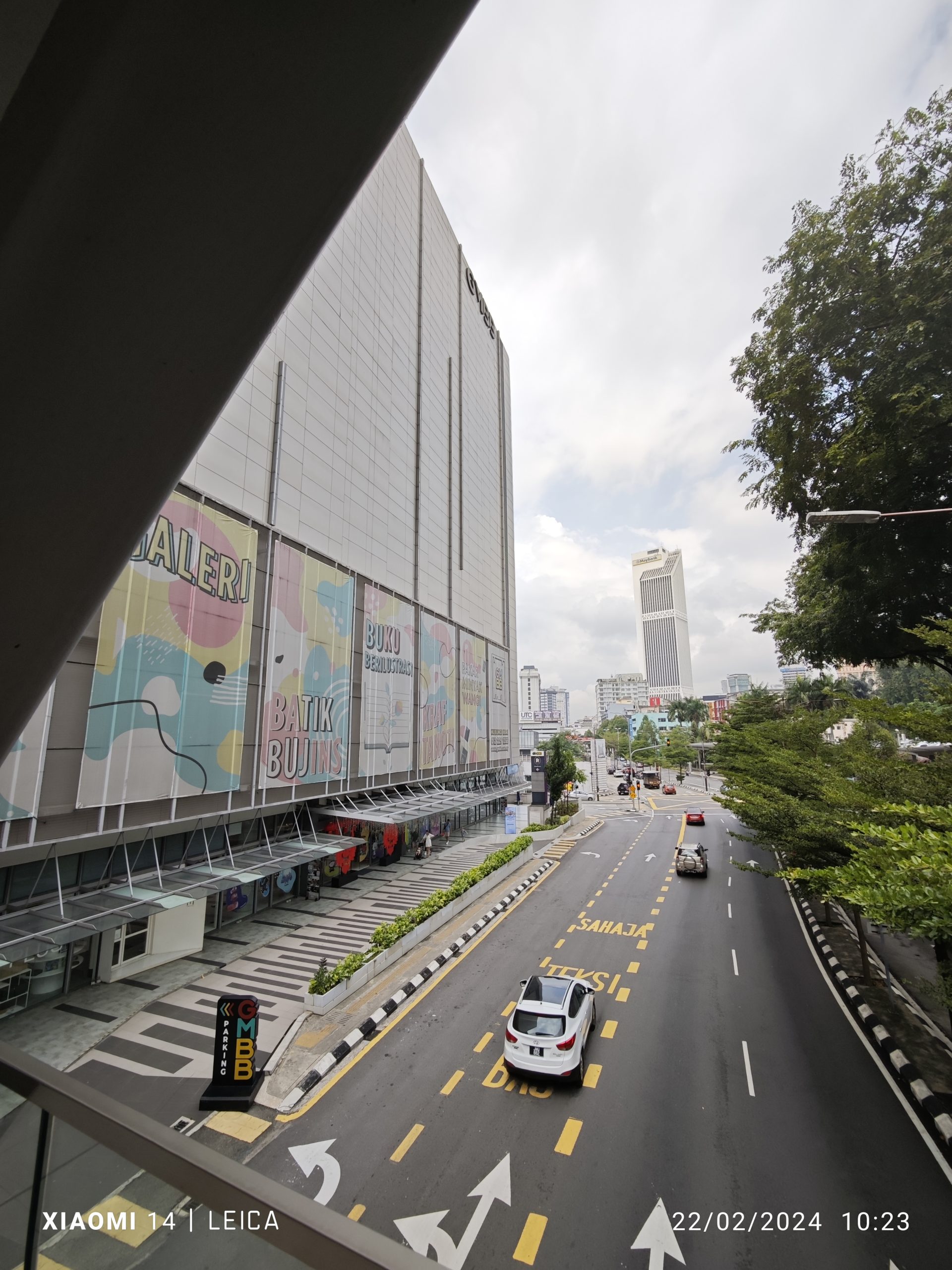
The main camera itself doesn’t feel too much of a change from the Xiaomi 13T Pro, with a fantastic point and shoot experience with a choice between the more saturated Leica Vibrant look or the more moody Leica Authentic look that to me is the more aesthetically pleasing option. But it’s the huge jump in quality on the telephoto shooter that I’m far more excited about. Zooming in results in shots just as clear as the main camera at times, and the shooting portrait shots now result in lovely photos that have both great bokeh and colour reproduction, something that I felt was a little lacking on the Xiaomi 13T Pro.
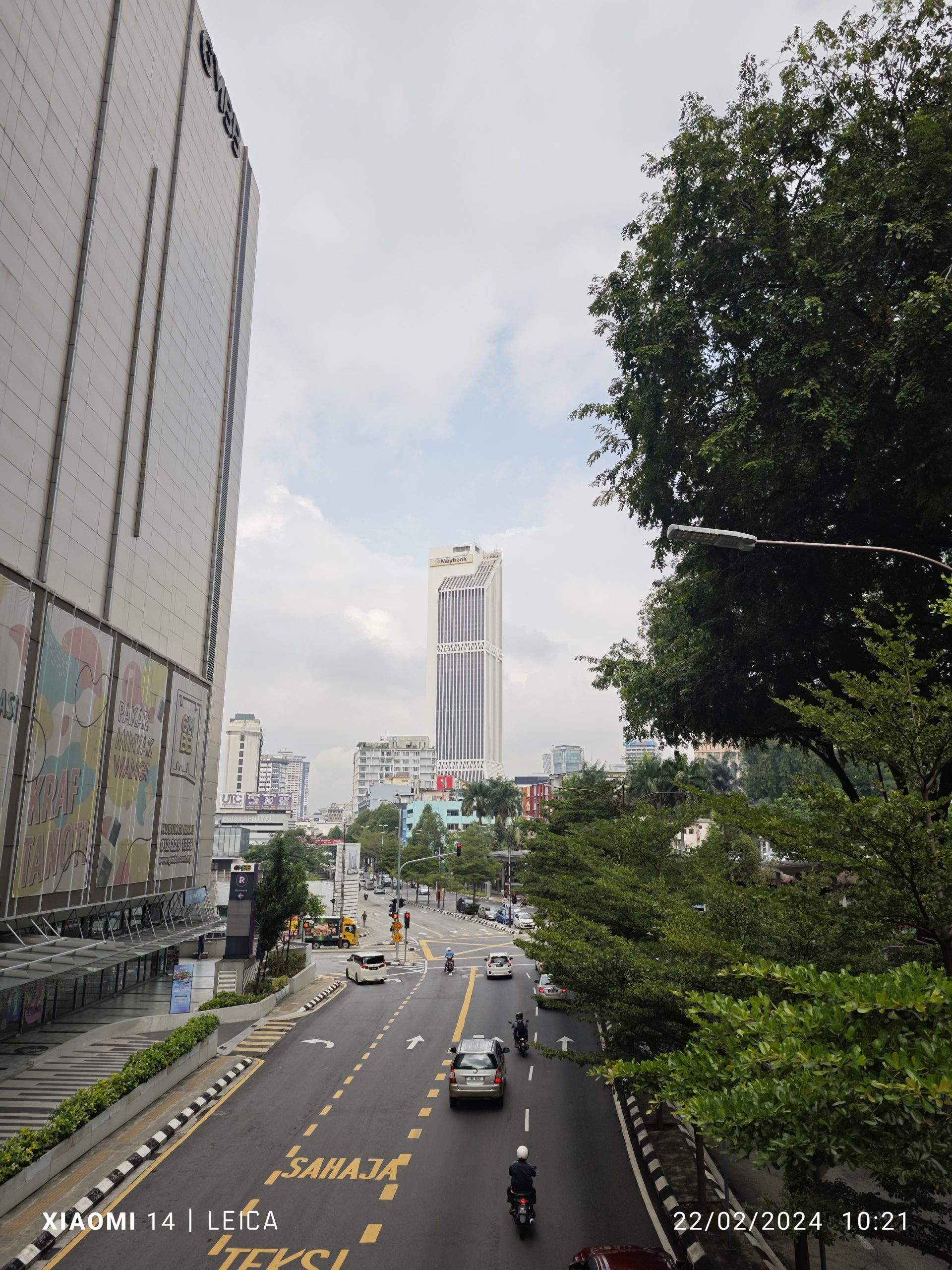
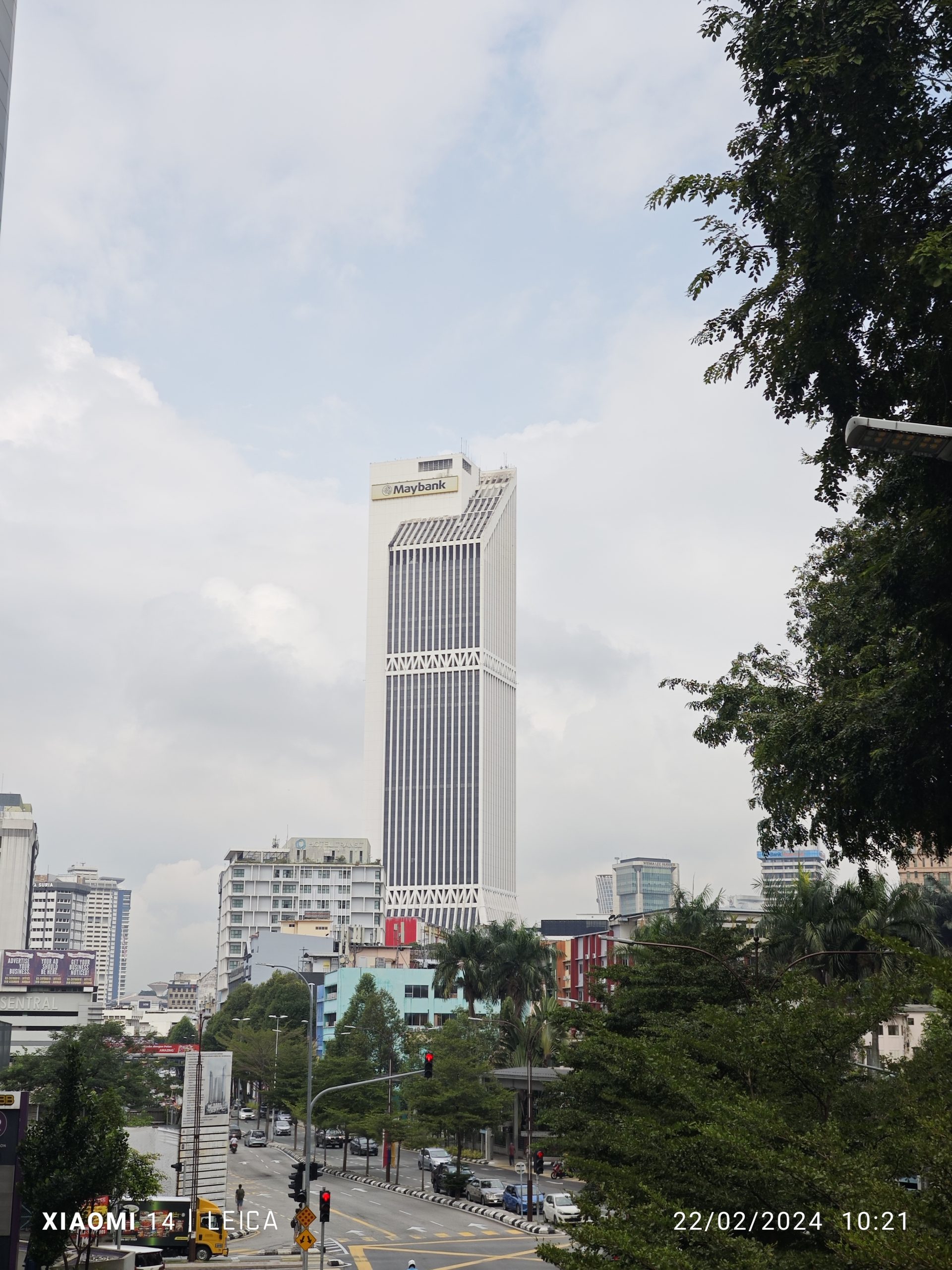
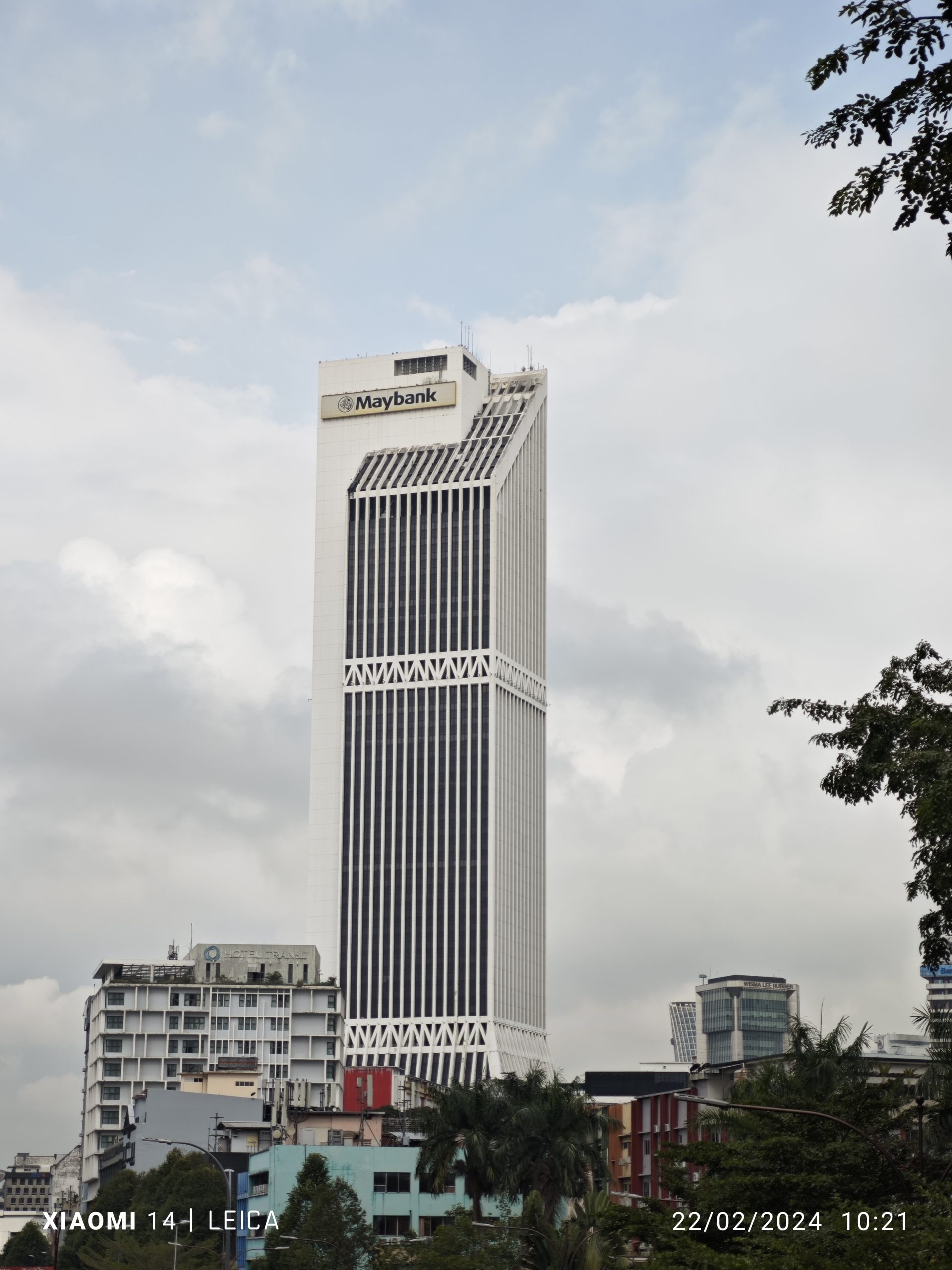















The short of it then is that these cameras are pretty dang impressive, and often times I found myself reaching for the Xiaomi 14 more to take a quick photo rather than my—admittedly aging—iPhone.
Sorry, it’s only how much?
So when I shot the video version of this review, it was right after it debuted at MWC 2024 but before it arrived on our shores. As such, I couldn’t really put it against its rivals such as the Samsung Galaxy S24—at least, in a Malaysian context. That’s why if you watch our video review of the Xiaomi 14, I ended it by stating that it’s a really good smartphone that will need to be priced below the RM4,099 price tag of the Galaxy S24 if it wants to be competitive against Samsung’s offering.
Well as it turns out not only is it cheaper than the Galaxy S24, but it’s a whopping RM600 less than the Galaxy S24:
- Xiaomi 14, 12GB RAM, 256GB storage – RM3,499
- Xiaomi 14, 12GB RAM, 512GB storage – RM3,799
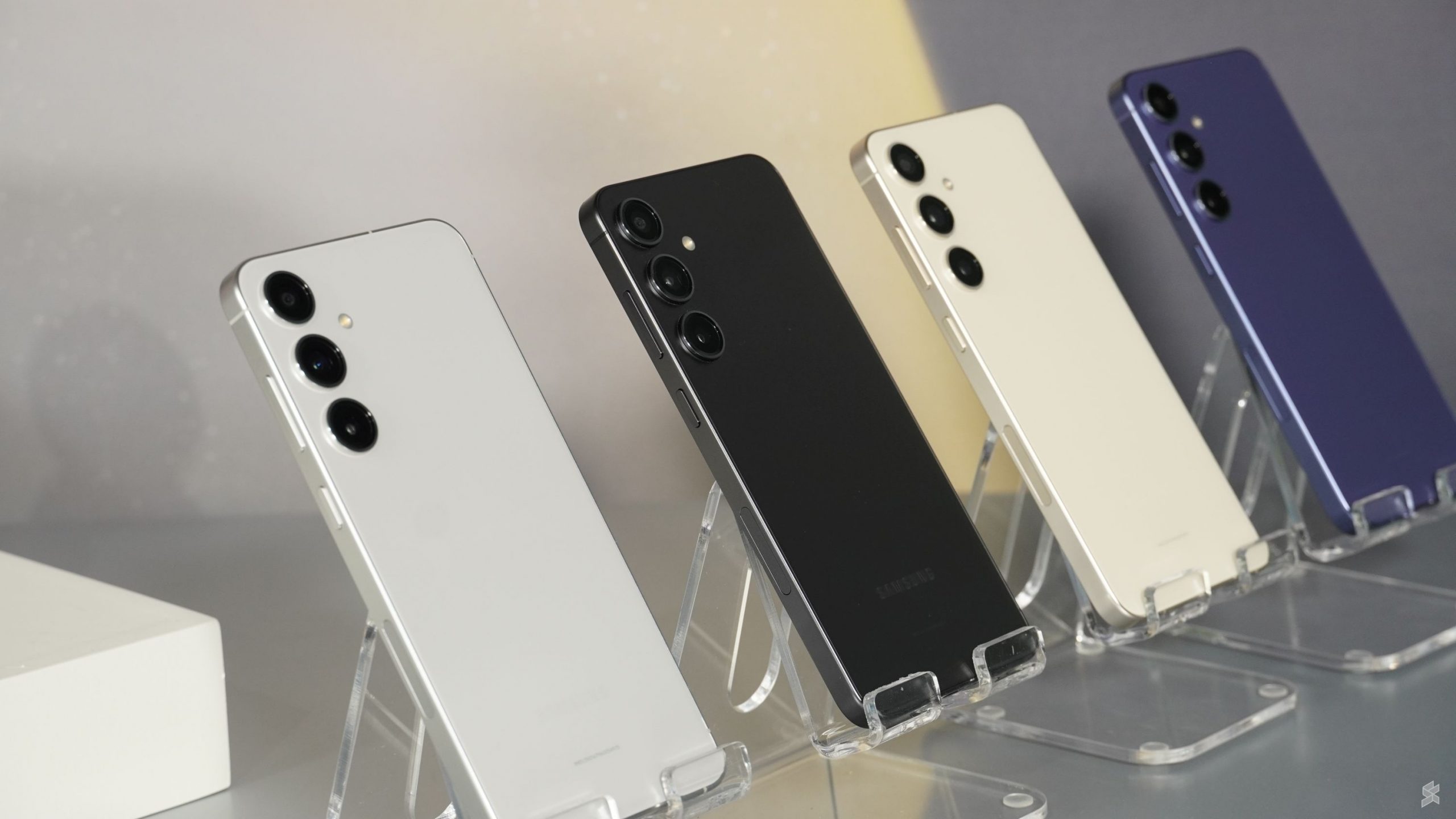
Now in my defence, I had a reason to be wary: the Xiaomi 14 actually costs more than the Galaxy S24 does in Europe. But we don’t live in Europe now do we? In fact, for many Malaysians, the Xiaomi 14 presents itself as an extremely compelling option for anyone seeking a flagship Android smartphone for this year.
I mean sure, it’s not perfect; some improvement to HyperOS would be nice and the speakers could be better, but at RM600 less than what I would consider its competitor, it’s a no-brainer decision. Not only is it RM600 less than the Galaxy S24 at the same storage tier, it also packs 12GB of RAM compared to the Galaxy S24’s 8GB, uses a larger battery, has arguably better cameras and is powered by the Snapdragon 8 Gen 3 rather than the Exynos 2400 which may not be to local tastes.
That’s not to say that the Galaxy S24 doesn’t have its own benefits—OneUI is perhaps a tad more user friendly than HyperOS, and Samsung is also guaranteeing seven years of software support. Furthemore, the Xiaomi 14 isn’t the cheapest flagship smartphone in Malaysia either. There’s the likes of the Meizu 21 which starts at just RM2,999, while the iQoo 12 goes for RM3,399.
But if you want an all round Android flagship that packs just about everything you’d expect—decent display, premium looks and feel, outstanding cameras and solid battery life—the Xiaomi 14 is definitely one device that I think does the job well without breaking the bank.

